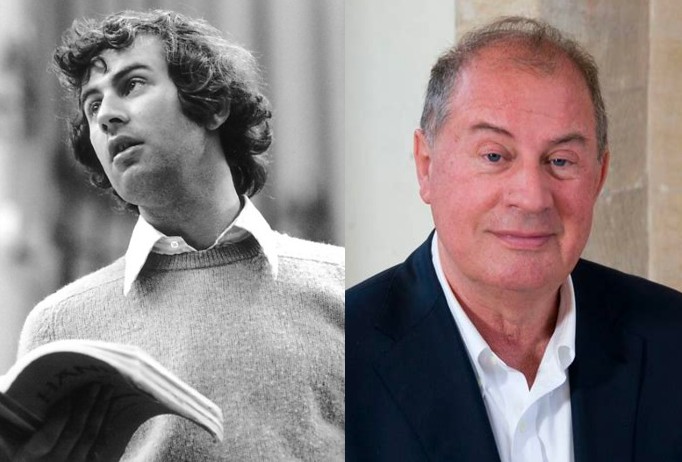Artist Spotlight ~ harpsichordist Geneviève Soly

April 18, 2024
Geneviève Soly
 An interview between John Thiessen and harpsichordist Geneviève Soly
An interview between John Thiessen and harpsichordist Geneviève Soly
JOHN: Later this month, virtuoso Quebecoise organist and harpsichordist Geneviève Soly will come to New York for performances at St. Malachy’s Church — The Actors’ Chapel, including a special Midtown Concerts appearance on Tuesday, April 30. Geneviève, a warm welcome from GEMS in advance.
GENEVIÈVE: I am so happy to learn about the musical happenings at St. Malachy's Church — The Actors’ Chapel, which seem plentiful and so very interesting, and to learn about New York, which I know nothing about (shame on me!). I also look forward to spending a week participating in the Paul Creston Award Celebrations for which I am honored to be this year’s award recipient. I would also like to thank Stephen Fraser, whom I have known since he was a child, whose musical talents and commitment to music I noticed from a very early age.
GENEVIÈVE: Je suis vraiment heureuse de découvrir l"activité musicale qui semble fébrile et tellement intéressante à St. Malachy's Church — The Actors’ Chapel, de découvrir New-York que je ne connais pas (shame on me !) et de passer une semaine dans le cadre de la réception du Prix Paul Creston que je suis honorée de recevoir. Je remercie Stephen Fraser que je connais depuis qu'il est enfant et dont j'avais remarqué le talent et l'engagement musicals dès son jeune âge.
JOHN: We consider Stephen an important member of the GEMS family, and besides his enormous musical talents, it has been such a pleasure to work with him these past two years. Geneviève, you come from a legendary musical family, and at age nine, decided to become a musician after listening to Sviatoslav Richter play Robert Schumann’s Fantasiestücke. You were surrounded by virtuosity in your house. What was so special about Richter’s recording that led to this fundamentally important life decision
GENEVIÈVE: This record was a part of my parents' collection, and I often heard it played without ever really listening to it. However, one day I sat down and listened to it from beginning to end, both sides in its entirety, without really knowing why. I was completely awestruck and had an incredible experience — I felt as if I could really “feel” the musical performance in all its power and strength! As for the music itself, I loved every note of it. When my sister came to get me and wanted to play outside, I remained in the living room instead listening to the music. When my mother saw me in the living room, she stood in the doorway. Seeing that I was attentively listening, she went over to the piano and began to play some of it herself (she knew the piece well). This was a revelation to me. I finally made the connection that the music performance I was hearing on the record was produced by a REAL, flesh-and-bones person, and that I, too, could do it, much like my parents (I still remember the yellow liner notes with his image on the cover of it — I believe it was an Archiv Production recording). From this moment on, there wasn’t any doubt in my mind that this is what I would want to do for the rest of my life. I was 10 years old when we moved out of this house, so this memory dates back to when I was at least 9 or 10 years old.
GENEVIÈVE: Ce disque faisait partie de la collection de mes parents et je l'entendais souvent sans vraiment l'écouter. Un jour cependant, et je ne saurais dire pourquoi, je me suis assise et je l'ai écouté d'un bout à l'autre — les deux faces du long jeu. J'étais fascinée. Quelle incroyable événement! Je "sentais" l'interprétation, sa puissance et sa force. Quand à la musique, j'en ai aimé chaque note. Ma soeur est venue me chercher pour jouer dehors mais je suis restée au salon à écouter la musique, Finalement, ma mère est arrivée dans le cadre de la porte du salon et, voyant mon écoute attentive, elle s'est mise à mimer le jeu au piano (elle connaissait bien l'oeuvre). Ce fut une révélation. J'ai compris que derrière la musique que j'entendais grâce au disque, une personne en chair et en os — dont le dessin était d'ailleurs reproduit sur la pochette jaune du disque (Archiv Production il me semble) — et qu'interpréter de la musique était un FAIT RÉEL que moi aussi je pourrais faire, comme mes parents le faisaient. Il n'a alors fait aucun doute que c'est ce que je ferais toute ma vie. Comme nous sommes déménagés de cette maison lorsque j'avais 10 ans, cette anecdote remonte à mes 9 ou 10 ans tout au plus.
JOHN: Your career has encompassed every aspect of music, as a performer, professor, musicologist, and administrator. Of particular interest to you as a performer and musicologist, is the harpsichord music of Christoph Graupner (1683–1760), which you have edited for Breitkopf and Härtel. Please speak about this project and what drew you to Graupner, a composer who has been unfairly neglected.
GENEVIÈVE: Oh! Graupner has occupied so much of my time and energy since November 2000, when I rediscovered an anonymous manuscript of his harpsichord music at Yale. I wouldn’t even know how to begin to summarize this project here. It encompasses so much more than harpsichord music. But first, I would like to point out straight away that the edition to which you are referring has not yet been published. With a publisher such as Breitkopf, the publishing process is extremely long. Also, the edition will be trilingual, which will require a large amount of proofreading. Furthermore, I am also interested in his church music, as I have conducted more than 50 of his cantatas (out of the 1418 that he composed!). I am also interested in his life. My next project will be writing a series of books on Graupner: a biography; his relationship with his friend, Georg Frederic Händel (the stylistic links in their early harpsichord music while they both worked at the Hamburg Opera from around 1706–1709 or 1710 which was the focus of one of my Analekta discs); and finally, his harpsichord music.
GENEVIÈVE: Oh ! Graupner occupe tellement de mon temps depuis que j'ai redécouvert sa musique de clavecin à Yale en novembre 2000 dans un manuscrit anonyme qui y est conservé que je ne pourrais pas résumer ici ce projet. Il englobe beaucoup plus que la musique de clavecin. Je spécifie tout de suite que l'édition à laquelle vous vous référée n'est pas encore parue (le processus d'édition chez un éditeur tel que Breitkopf est extrêmement long et l'édition sera trilingue, ce qui m'oblige aussi à beaucoup de relectures). Par ailleurs, je m'intéresse aussi à sa musique d'église — j'ai dirigé plus de 50 de ses cantates (sur les 1418 qu'il a composées !) — et à sa vie. Mes prochain projet sont d'ailleurs l'écriture de livres sur Graupner : une biographie, son rapport avec son ami, Georg Frederic Händel (les liens stylistiques de leur musique de clavecin de jeunesse alors qu'ils travaillaient tous les deux à l'opéra de Hambourg vers 1706–1709 ou 1710 est extrêmement intéressante et a fait l'objet d'un de mes disques Analekta), sa musique de clavecin.
JOHN: Your Midtown Concerts performance will feature the music of Graupner’s contemporary J.S. Bach with eight Preludes and Fugues from the Well-Tempered Clavier, Book I (1722) from around the time that both composers were vying for the position of Cantorate at Leipzig. Your program juxtaposes four sets of consecutive Preludes and Fugues in major and minor modes. How did you make a choice of repertoire for this recital?
GENEVIÈVE: Bach thought intensely about his collections and rhetorical elements and number symbolism, which are very present and highly significant in this collection. It seemed necessary to me to begin with the first, famous “C Major” prelude, which is so well known, and to conclude with the grandiose B minor (no. 24). I also wanted to play the 12th in F minor, which punctuates the collection in the middle and whose subject of the fugue, associated with its counter-subject, comprises all 12 notes (semitones) of the scale. The subject of the Fugue in B minor comprises the 12 semitones of the scale alone, without counting the counter-subject. I also wanted to offer an equal group of 4 preludes halfway through the recital (number 12 in F minor) and 4 for the second part of the collection. It was also important to present the major and minor pairs. Therefore, this would be the first four: C Major no. 1, then C minor no. 2, then F Major no. 11, and F minor no. 12. For the last four "diptychs" (this is the way I name each prelude and fugue, so the 2 pieces of each key/modality, much as we speak of triptychs in visual art for altarpieces with two panels in addition to the main one in the center) I simply started with number 17 in A-flat Major, which is the relative of F minor heard in 4th position. Its minor equivalent was composed in the enharmonic key of G sharp (minor).
GENEVIÈVE: Bach a intensément réfléchi sa collection et les éléments de rhétorique et de symbolisme des nombres sont très présents et puissamment signifiants dans cette collection. Il me semblait nécessaire de commencer par le premier - le fameux en do majeur dont le prélude est si connu - et de terminer par le grandiose si mineur (no 24). Je voulais aussi jouer le 12ème en fa mineur qui ponctue au milieu la collection et dont le sujet de la fugue, associé à son contre sujet, comporte les 12 notes (demis-tons) de la gammes . Le sujet de la fugue en si mineur quand à lui comporte les 12 demis-tons de la gamme à lui seul, sans compter le contre-sujet. Je souhaitais aussi offrir un groupe égal de 4 préludes jusqu'à la moitié du récital (le numéro 12 en fa mineur) et 4 pour la seconde partie de la collection. Il était aussi important de présenter les paires majeures et mineurs. Cela donne donc, pour les quatre premiers : do majeur no 1, puis do mineur no 2, puis fa majeur no 11 et fa mineur no 12. Pour les quatre derniers "dyptiques" (c'est comme cela que je nomme chaque prélude et fugue, donc les 2 pièces de chaque tonalité/modalité, tout comme on parle de tryptiques en art visuel pour les retables avec deux panneaux en plus du principal au centre), j'ai tout simplement commencé par le numéro 17 en la bémol majeur, qui est la relative de fa mineur entendu en 4ème position. Son équivalent mineur a été composé dans la tonalité enharmonique de sol dièse (mineur).
JOHN: With Bach, there is layer upon layer, in terms of key relationships, structure and symbolism. Besides your Midtown Concerts recital, you will also present a concert of organ music. What will you perform?
GENEVIÈVE: Of course, I will play works by Johann Sebastian Bach, and also by his teacher, Dietrich Buxtehude. I will also play church music and religious music, as this year we are marking the 300th anniversary of the arrival of the French Sulpician cleric, organist and musician Jean Girard to Ville-Marie (Montréal) in 1724, who brought with him in his suitcase an immense manuscript of church organ music that we call the “Montréal Organ Book”. From this, I chose several extracts. While I normally play Baroque music, I have also included three Romantic pieces for the organ that were written in the Baroque “spirit” by Johannes Brahms and Marcel Dupré.
GENEVIÈVE: Je jouerais du Jean-Sébastien Bach, évidemment et aussi les œuvres de son maître D. Buxtehude , je jouerai aussi de la musique d’église, musique, religieuse , comme nous soulignons cette année le 300e anniversaire de l’arrivée à Ville-Marie (Montréal) en 1724 du clerc Français sulpicien , organiste et musicien Jean Girard, avec, dans ses valises , un immense manuscrit de musique d’église d’orgue que nous nommons le Livre d’orgue de Montréal, j’en ai choisi plusieurs extraits. Bien que je joue normalement de la musique baroque , j’ai également inclus trois pièces romantiques pour l'orgue écrites dans l’esprit baroque de Johannes Brahms et Marcel Dupré.
JOHN: We will eagerly look forward to hearing both concerts at St. Malachy’s Church!
GENEVIÈVE: And I look forward to being there!
GENEVIÈVE: Et moi aussi de m’y trouver !
More info on April 30 harpsichord recital
More info on May 3 organ recital
English translation: Stephen Fraser
Artist Spotlight ~ The Music of "Upon Reflection"
April 16, 2024
Upon Reflection
An interview of John Thiessen with Frances White, Lisa Terry, and Larry Lipnik
 JOHN: In late February, I spoke with Wendy Steiner, the co-creator and director of Upon Reflection: An Opera in Ten Images which will be performed at The DiMenna Center in New York, May 4 and 5. Our discussion focused on the conceptual side of the piece and the relationship between imagery and reflection which drives the narrative. What became evident during that discussion was the need to follow up with composer Frances White, as well as Lisa Terry and Larry Lipnik, members of Parthenia, the ensemble which will join acclaimed soprano Sherezade Panthaki for Upon Reflection’s May première. I began by asking Frances, Lisa, and Larry about their previous collaborations.
JOHN: In late February, I spoke with Wendy Steiner, the co-creator and director of Upon Reflection: An Opera in Ten Images which will be performed at The DiMenna Center in New York, May 4 and 5. Our discussion focused on the conceptual side of the piece and the relationship between imagery and reflection which drives the narrative. What became evident during that discussion was the need to follow up with composer Frances White, as well as Lisa Terry and Larry Lipnik, members of Parthenia, the ensemble which will join acclaimed soprano Sherezade Panthaki for Upon Reflection’s May première. I began by asking Frances, Lisa, and Larry about their previous collaborations.
Frances, I was so taken by your earlier composition for Parthenia, A flower on the farther side after a line from Hildegard von Bingen to which Wendy Steiner added digital imagery, with the resultant multimedia piece titled Traces on the farther side. A sense of beauty pervades the piece with Parthenia’s period instruments effortlessly carrying the lyricism. I have the sense that historical bow techniques are different from that which you would naturally expect from a modern string quartet. Is this something you enjoy or intend when writing for period instruments?
FRANCES: It’s something that I love about those instruments, and in fact it’s something that informs my writing for modern strings because the more aggressive approach isn’t me.
JOHN: When you are composing for modern strings, do you include markings like cantabile or other information in the score which leads them to play less aggressively?
FRANCES: Sometimes. In my opening notes, I might say that the style is expressive, and I tend to mark dynamics very carefully, coming from niente (“nothing”) and going to niente. I find that the nature of the writing is obvious to the many sensitive modern musicians with whom I’ve worked. If there’s any confusion, we clear it up at the first rehearsal. Parthenia, however, always gets the content of the music immediately, as does Sherezade.
JOHN: Now, Larry and Lisa, talk about your experience as instrumentalists.
LARRY: The thing about working with Frances is that her approach is very “painterly”. I feel like I’m playing colors, that there is a palette of visual textures. We don’t have the same aggressive articulations that you would associate with a modern string quartet, but I do feel that Frances writes in a way that enhances the characteristics of the viol. Period composers for the instrument were also enthralled by the sound and sonority that it could create. That’s the reason our collaboration over the years with Frances has been so successful. And well before Upon Reflection, the musical textures and colors of Frances’ music inspired Wendy Steiner's visual imagery in Traces on the farther side. Frances’ sensory lushness has made performing her music unique in our experience.
JOHN: You say when you are playing Frances’ music, you are playing colors. Do you experiment with the intensity of those colors, or do you just enjoy them?
LARRY: Absolutely. I think it’s the way you might blend colors, and how you transition from one note to another. There’s so much of that in Frances’ writing. It’s abstract but with a tactile element. There are textures — whether it is crosshatching or smooth.
LISA: The first piece I ever played by Frances was a duo for double bass and viola that we arranged for two bass viols. It was performed with tape, so we had to follow the time precisely. Frances’ music is emotional and lyrical and so easy to play on modern strings or viols. Viol players are humans too, and we just play beautiful music. It’s not anything to be fussy about — we deliver Frances’ beautiful writing.
LARRY: It’s about beauty. It’s so rare in contemporary music that you encounter something beautiful. And it’s what has brought us to work together with Wendy Steiner. She studies modern art and its hostility to the notion of beauty. I think we are beginning to come back into an appreciation of beauty. The tide hopefully is turning. With Frances’ music, we can explore aspects of this as opposed to raw emotions of anger. It’s a very different experience.
JOHN: And very timely, too, given what’s happening in the world. We live in a period where there is seemingly a breakdown of anything that is good and beautiful, and almost intentionally so.
LISA: Frances’ music has gorgeous, lyrical lines that make me want to play more. In recent rehearsals and recording sessions, I often would want to be almost “too big” for what the ensemble needed. The sounds Frances writes make me want to play really full, but she would say “No, I want that to be a little more subtle.” So I write in dynamics to make my lines blend more with the ensemble and the voice.
JOHN: Larry, talk about anything particular to the recorder, which you exclusively play for Upon Reflection.
LARRY: I’ve been playing the recorder longer than I have been playing the viol. They are different ways that I can express myself. There are different voices that I possess, so that singing, playing the viol, playing the recorder, are all aspects of my personal expression. On this piece, I just play recorder. It’s an instrument you breathe through, similar to drawing a bow, but it puts me in an interesting position of providing music together with the viols and Sherezade’s voice, also a breath instrument.
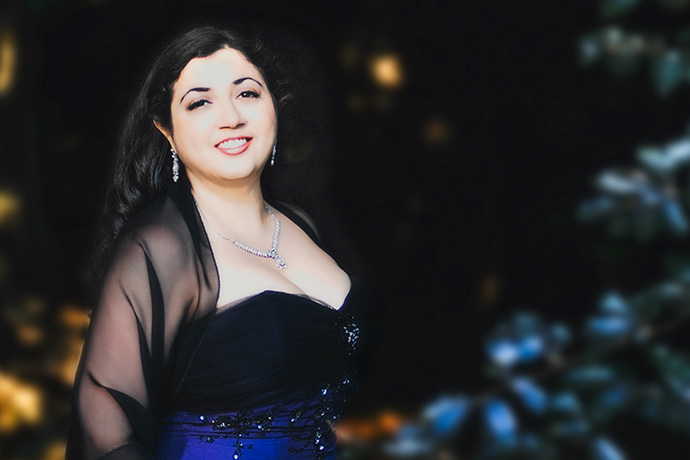 JOHN: How do you interact with Sherezade and the viols, musically or otherwise?
JOHN: How do you interact with Sherezade and the viols, musically or otherwise?
LARRY: I feel that I provide colors. A lot of what I play are haunting long tones in keeping with Frances’ love of traditional Japanese music and the technique of bending notes. I am also interacting with the electronics — recordings of ourselves — which form an integral part of Upon Reflection.
FRANCES: The electronics are echoes of you, in keeping with the reflection idea as well. In the aria Red Pompeii, we end up with three Sherezades — a pre-recorded Sherezade interacting with a pre-recorded Sherezade, and a live Sherezade interacting with two pre-recorded Sherezades.
LARRY: It’s like a hall of mirrors.
LISA: Which is a lyric from the opera!
LARRY: It’s like a Picasso portrait, a distortion, not in a pejorative sense, but in a very personal way. And back to the recorder, I feel it provides a kind of commentary, a reflection.
LISA: There are passages where the viols play duplicates, triplicates, and stacked up rhythms.
LARRY: And the recorder floats above it all. I join the electronics in an almost mystical reflection of what’s happening.
FRANCES: When these passages occur of viols playing stacked rhythms, it almost gives the impression that you are playing viols with the [sustain] pedal down. It softens everything. And Larry and Sherezade tend to float above this.
LARRY: When the viols play intricate rhythms in different meters, it is like the rippling of water. And they occasionally crop. There is a ripple going one way and another that creates different patterns in the water, and you take it all in. You process it as subdivisions, but it is internalized — something you experience. You hear the whole, not deconstructed individual parts.
JOHN: Talk a little bit about how you will stage the piece, balancing what comes out of the instruments with the electronics.
FRANCES: Now, that’s always a challenge! Unfortunately, we can’t do anything until we get into the space [Cary Hall at the DiMenna Center]. Anything we do in rehearsal using my two little studio speakers won’t be the same as the concerts. Once we are at DiMenna, we will have to have time for technical rehearsal. Any performance with electronics requires the right staging and the careful balancing with the acoustic instruments and the voice.
JOHN: Does having pre-recorded music allow the performers occasional space to relax?
LISA: The idea was to alternate movements with live and pre-recorded voice. Otherwise, the piece is too long and too intense to perform live. We thought it was wise also for practical reasons in rehearsal.
LARRY: Wendy Steiner conceived of this as though we are in an art gallery. The images will be animated and visually arresting, so there will be staging plus animated images which come alive with the music. There’s a lot to take in for the audience.
JOHN: Who will be behind the controls for the electronic parts?
FRANCES: Wendy is working with lutenist and video artist Ryan Closs to create the videos. It’s something I know nothing about, but they are doing very beautiful things visually. Ryan will be running the video during the performances, while I will be doing the audio electronic parts. In some arias, I have a lot of direct interactions with the musicians, essentially performing with them.
JOHN: When you get into the space on May 1st for the first rehearsal, what will happen?
LISA: We will have five hours. Parthenia and Sherezade can rehearse the music as Frances, Wendy and Ryan are working out technical things and experimenting with staging.
FRANCES: Prior to that, I will work with Ryan so that hopefully when we walk in on May 1st, we’ll know exactly what we’re doing.
LARRY: Everything that is pre-recorded is done, and we have had extensive rehearsals. At DiMenna, we will be doing brush up and staging to make things as refined and polished as can be.
JOHN: What is the running time of the performance?
FRANCES: About an hour and ten minutes. There will be some variation, but that’s approximately it.
JOHN: What do you think the cumulative effect will be from beginning to end?
FRANCES: It’s about the journey of the character, at the beginning shy, gradually revealing her emotional connection to her work, and finally in the last aria, making herself quite vulnerable and inviting her audience to see what she sees. It’s what all artists do — sharing with others. As a composer, working with any piece that has a text with a dramatic narrative, you want to follow and support the drama with your music. It’s different in a way from writing non-text music.
JOHN: The artist moves gradually to an openness with her audience and without giving too much away, Schubert’s Winterreise is integral to the piece. In your composing, how do you navigate this?
FRANCES: In the first aria, the character is referencing her strong emotional connection to hearing a performance of Winterreise. If you listen to the song cycle, it’s such a powerful thing and relentless.
JOHN: Do you quote it musically in the opera?
FRANCES: Oh, yes. I’m very lucky to have an in-house pianist, my husband, writer James Pritchett, who played sections of the piece for me. I do use sections of “turbulence” from the piano part in the first aria.
JOHN: How do you work as a composer?
FRANCES: It’s a combination of things. When I start a piece, I think, I have no idea how to do this. Something comes to me, and I play around with it, and I keep playing around with it. When composing, I start in the morning and around 11:00, I typically go out for a run. That’s valuable because it empties my head. And then things can come in that I didn’t expect. It’s more that I am finding something rather than constructing.
JOHN: Lisa, what’s it like to put this project together logistically?
LISA: Talking with the members of Parthenia, we develop our season with a year and a half rehearsal schedule set in advance. In December 2022, we figured out what we would need to put on Upon Reflection in May 2024, subject to Sherezade’s availability and ours.
JOHN: How did you determine the time needed?
LISA: We set aside an initial full week of evenings and weekend daytimes. Then we found a slot in January 2024, and booked additional two-day events during the spring. We later adjusted to narrow the scope of what was required, and then found we didn’t quite need all the days we had set aside.
JOHN: In other words, the project is in control.
LISA: We try to look ahead and think things through clearly. We make sure the dates are all in our calendars. Our members are very serious about the obligation, and they show up ready to play.
LARRY: I think that’s true about why Parthenia has stayed together, because we take our commitments seriously.
FRANCES: That’s one of the reasons why composers love working with Parthenia.
JOHN: I have the strong sense that Upon Reflection would make an interesting film. Are you thinking that way? If so, what would you need to do to make that happen?
LARRY: We have talked for a couple of years about creating music videos. Upon Reflection is comprised of many self-contained closed form movements, which would lend themselves to produced films or animation. We could create a series of video projects where we could collaborate with other artists to get their take on the work.
JOHN: GEMS wishes you great success with Upon Reflection at DiMenna, and we will look forward to enjoying the film version soon!
Artist Spotlight ~ East of the River
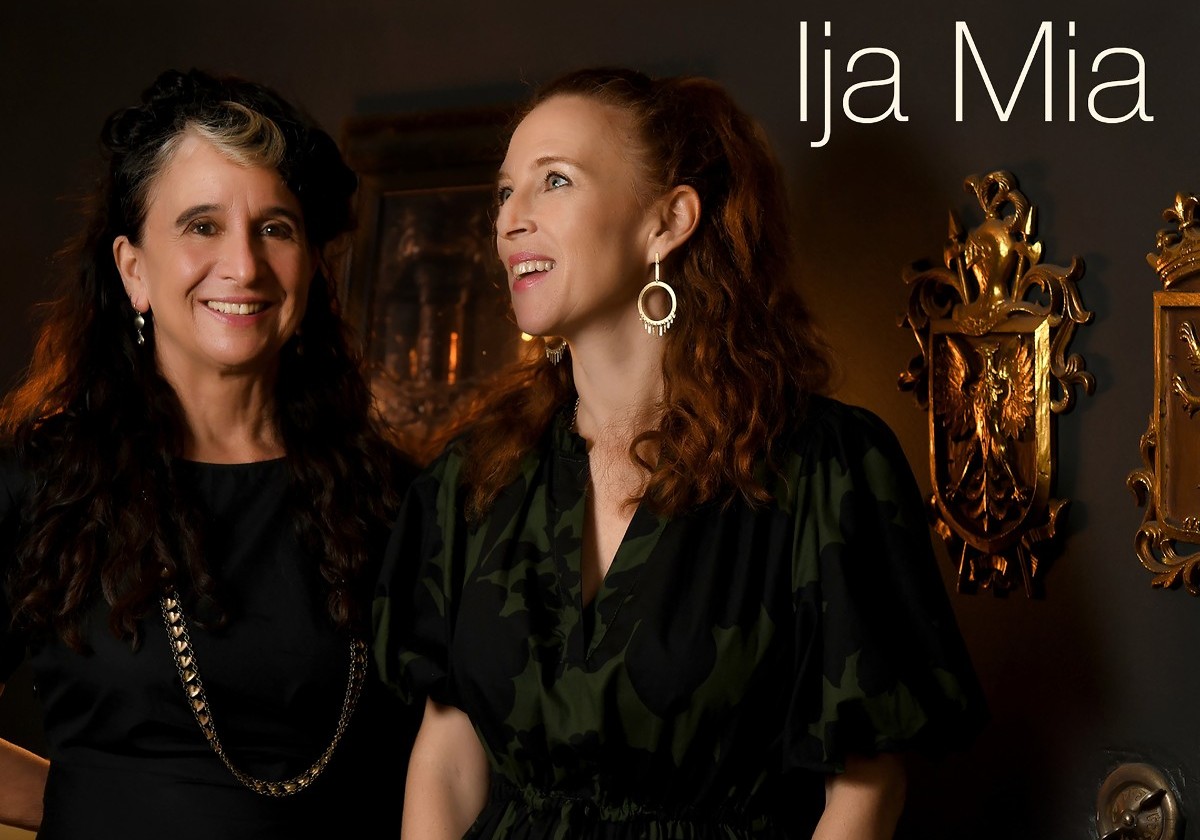
April 4, 2024
East of the River
An interview of John Thiessen with Nina Stern and Daphna Mor
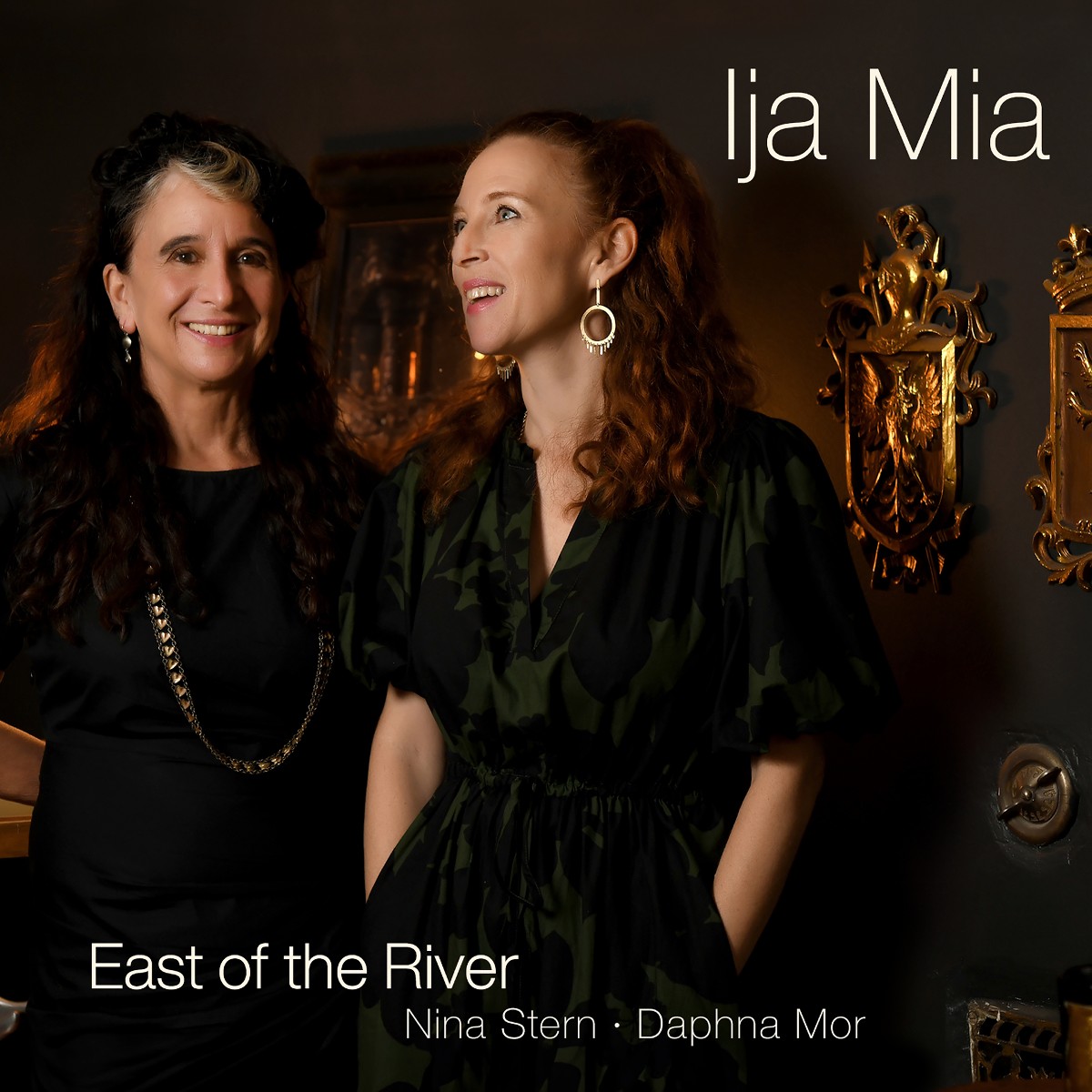 JOHN: When I first listened to pre-mastered tracks from East of the River’s December 2021 recording Ija Mia (My Daughter), I was astonished by the beauty of the melodies, the fluidity and artistic freedom in the performances, and a sense that East of the River has accomplished something remarkable with this intimate, intricate and multi-layered repertoire. I invited Nina Stern and Daphna Mor, co-directors of the ensemble, to discuss their recording as well as plans for its release on April 19 on AVIE Records. Nina and Daphna, let’s go back to the beginning. How did this project come about and how does it relate to your musical and personal journeys?
JOHN: When I first listened to pre-mastered tracks from East of the River’s December 2021 recording Ija Mia (My Daughter), I was astonished by the beauty of the melodies, the fluidity and artistic freedom in the performances, and a sense that East of the River has accomplished something remarkable with this intimate, intricate and multi-layered repertoire. I invited Nina Stern and Daphna Mor, co-directors of the ensemble, to discuss their recording as well as plans for its release on April 19 on AVIE Records. Nina and Daphna, let’s go back to the beginning. How did this project come about and how does it relate to your musical and personal journeys?
NINA: I had been looking at non-Western music from all over the world which would appeal to children (for my work in education) and came to especially love Armenian, Eastern European, and Arabic music. At the same time, Daphna and I began exploring that repertoire together in our own performing careers. That is how East of the River was born. When we began looking at Sephardic music, we found similarities to the Armenian repertoire — gorgeous melodies with twists that sear the heart. The music also spoke to me personally because of my Jewish family’s Venetian roots.
DAPHNA: This recording was a natural evolution for East of the River — as we explore Western and non-Western traditions and their meeting points in form, rhythmic content, and modal origins. Much of the music can appear simple on the page; the performance comes to life through arrangement and improvisation by the ensemble.
JOHN: Ija Mia features liturgical and secular Sephardic repertoire as well as Ottoman music. Tell us about the historical sources and performance traditions, and the artistic decisions East of the River made for the recording.
DAPHNA: The sacred music would have been sung in the synagogues a cappella by men, and in the home, by women and children. The liturgical poetry in this album is old, biblical and 9th–13th century, but the melodies, from the various communities in the diaspora, came much later. The folk music is an oral tradition frequently passed down by women, and is sung on our recording in Hebrew and Ladino. My grandmother is from the last generation of fluent Ladino speakers and it’s important to me to sing in this language as a way of preserving it as well as giving a new interpretation to this tradition. The Ottoman classical music is a gorgeous separate genre, based on a complex system of modes (Maqam) and various length rhythm patterns (Usul), including 32/8 time!
JOHN: Fundamental to the layered richness in the Ija Mia recording is a fascinating mix of instruments performed by virtuosos from different musical traditions.
NINA: East of the River musicians are steeped in jazz, folk, and classical traditions. We infuse the music with our sounds, arrangements, and interpretations. Our approach is to maintain this music as a living tradition, with our own unique collective voice.
Daphna and I both play recorders on the album. She is also featured as a vocalist on many of the tracks and my chalumeau makes an appearance as well. The oud is used throughout and is played by world-renowned musician Ara Dinkjian. Our percussionist is founding Silk Road member Shane Shanahan, our bassist is the phenomenal young Israeli musician, Tal Mashiach, and Palestinian multi-instrumentalist Zafer Tawil plays qanún, violin, and other percussion.
JOHN: You recorded during the pandemic. Tell us about the sessions.
DAPHNA: It happened during a time when we could finally meet together in a studio, unmasked, for three days. The team brought its best — joy and deep connection. We recorded at Reservoir Studio in New York with engineer and producer Ale Roubini, who was joined by fellow engineer Thom Beemer. The final tracks were mastered by Fred Kevorkian.
JOHN: The recording credits note “[p]artial funding gratefully received from Gotham Early Music Scene”. How important was our support for the realization of this project?
NINA: It was essential. Gene Murrow contacted us and other New York early music ensembles in 2021 asking for grant proposals. Funds had been made available to GEMS through the federal Shuttered Venues Operators Grant program, part of the American Recovery Act.
DAPHNA: The financial support from GEMS allowed us to realize the dream of making this recording.
JOHN: The other part of the story came later when East of the River was looking for a label for international distribution. At that point, GEMS was able to bring you together with AVIE Records from the United Kingdom. We are so thrilled that Ija Mia will be the first of a series of GEMS recordings on the label.
DAPHNA: We are as well. Together with GEMS and AVIE, we now are part of a new and exciting collaboration and opportunity. We are very grateful for that.
JOHN: East of the River has a CD release concert on April 11th at 7:30 pm at the B'nai Jeshurun Synagogue on West 88th Street. Why did you choose that particular synagogue to celebrate this happy occasion?
NINA: B’nai Jeshurun is an important center for the arts in New York and it is also a place with an emphasis on interfaith, peace and social justice.
DAPHNA: It is also one of the most gorgeous sanctuaries, decorated in a Moorish style, and appropriate to the occasion. In addition to our live audience, Bnai Jeshurun also offers a state-of-the-art multi-camera live stream of the concert; tickets can be purchased for either, along with donations in multiples of 18, which is a custom in Jewish culture as 18 represents numerically the word Chai which means Life.
JOHN: What can the audience expect to hear on April 11th? Will it be the same as the recording?
NINA: In the performance, musicians will be encouraged to play as long as they want, so the same pieces will be heard, but in an extended way.
DAPHNA: There will be lots of improvisation, which is a core element of this repertoire.
JOHN: You’ve said that the nature of the repertoire and the fact that it can be amplified opens the door wide for different kinds of venues.
NINA: We can perform this in a great variety of venues — anywhere from Joe’s Pub or Drom to traditional chamber series, universities, and synagogues.
DAPHNA: This repertoire can fit in a large concert hall or an intimate setting — folk, ritual music, formal, or informal. On May 10, we will play in a festival called Kuma in Greenpoint, Brooklyn. The presenting organization is centered around social justice.
JOHN: GEMS is so pleased to be on this journey together with East of the River. Ija Mia is an important project musically, historically, and socially, and we invite everyone to attend your concert on April 11 and to purchase a CD!
April 11 performance information & tickets
The album will have its full digital release on April 19. Pre-save or pre-order the album here
Listen to a single from Ija Mia below or on your favorite streaming platform.
View the trailer:
Notes on the Scene ~ Latest Edition
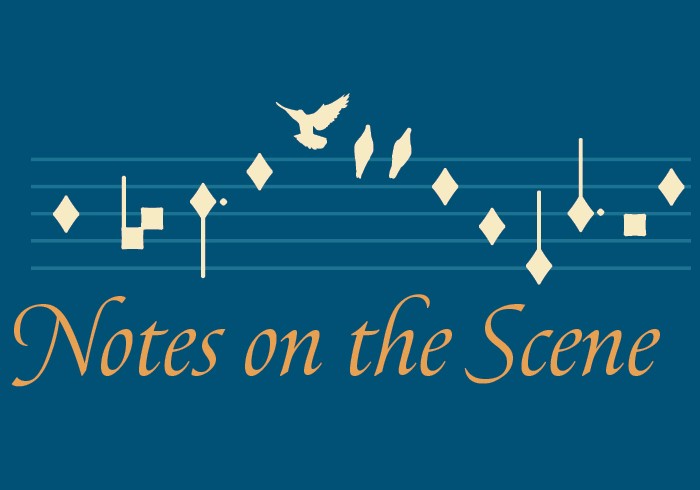 Notes on the Scene is published 2–3 times per month, on the 1st, 3rd, and 5th Thursdays. We include concert listings, news, video links, artist showcases and more from New York City's early music scene.
Notes on the Scene is published 2–3 times per month, on the 1st, 3rd, and 5th Thursdays. We include concert listings, news, video links, artist showcases and more from New York City's early music scene.
Enjoy our latest newsetter, published on April 4th.
View all of our recent email newsletters and e-blasts
Find out how to include your upcoming event or video in our newsletter here.
Artist Spotlight ~ Bach Virtuosi Festival
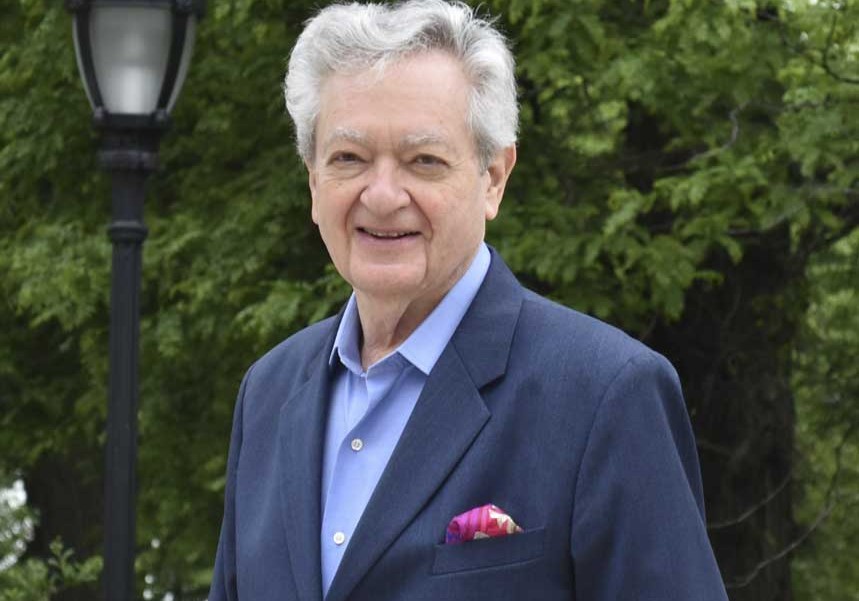
March 21, 2024
Bach Virtuosi Festival
An interview between John Thiessen and Lewis Kaplan
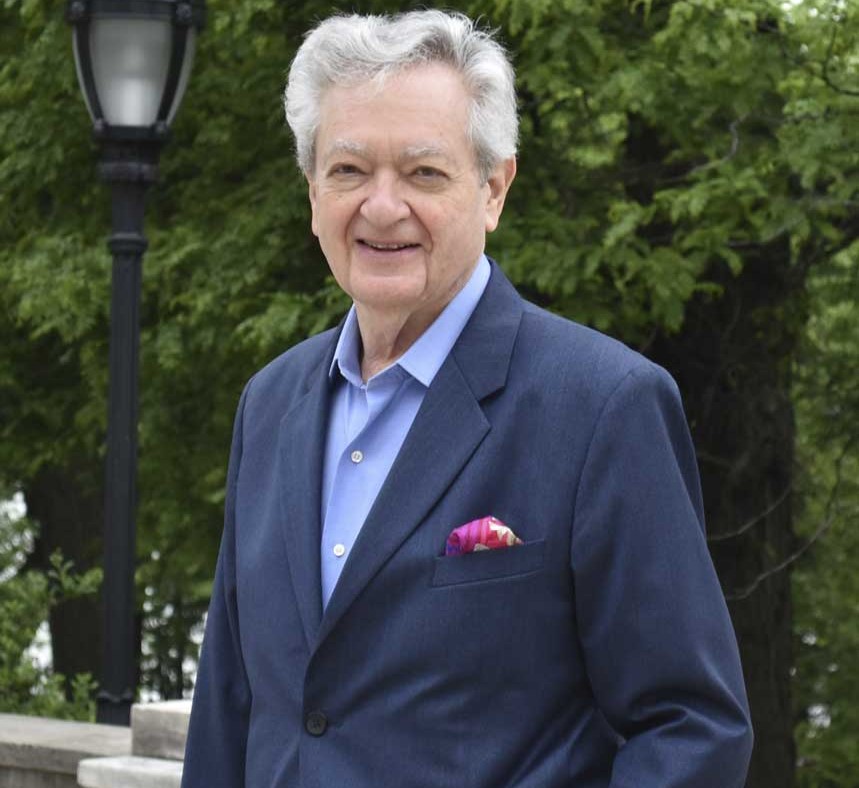 March 21 marks the first day of Spring as well as the birthday of J.S. Bach, whose surname, ironically, translates into English as “spring” or “brook”. To commemorate the composer’s birthday, we are joined by Lewis Kaplan, who at the tender age of 90, has founded a new Bach festival in New York. Talk about the epitome of optimism! In addition to Lewis’ boundless energy and ubiquitous smile, he has an inspiring clarity of purpose: bringing colleagues together to play extraordinary music. GEMS will co-present the inaugural Bach Virtuosi Festival in New York this May 13–21. Welcome, Lewis.
March 21 marks the first day of Spring as well as the birthday of J.S. Bach, whose surname, ironically, translates into English as “spring” or “brook”. To commemorate the composer’s birthday, we are joined by Lewis Kaplan, who at the tender age of 90, has founded a new Bach festival in New York. Talk about the epitome of optimism! In addition to Lewis’ boundless energy and ubiquitous smile, he has an inspiring clarity of purpose: bringing colleagues together to play extraordinary music. GEMS will co-present the inaugural Bach Virtuosi Festival in New York this May 13–21. Welcome, Lewis.
It is a great pleasure to work with you, John. In addition to your unrivaled Baroque trumpet playing, your musical insights, depth, and integrity are rare indeed.
Lewis, you are very kind. We first met in Portland, Maine about a decade ago, where you invited me to play Bach’s Brandenburg Concerto No. 2 at your festival. What seemed remarkable at the time, but which I now understand as your way, was that you called me! Usually these days, invitations come by email from an organization’s representative. I’ll never forget our telephone conversation and I suspect many of my colleagues have had a similar experience.
I knew Richard Colburn, the billionaire benefactor of the Colburn School in Los Angeles, quite well. I stayed with him at his beautiful home in LA and would visit with him at his chalet overlooking Salzburg three or four times during the two weeks I was teaching each summer at the Mozarteum. One afternoon sitting with him in his kitchen I asked, “Dick, what is the secret to making so much…? Forget it, Dick, it’s a stupid question”. “No, ask me” he responded. I repeated the question and again halted before finishing, repeating it’s a stupid question. Again, he insisted, “Ask me.” “Okay, what is the secret to making so much money?” “Not a stupid question at all,” answered Colburn. “It’s not the smartest guy, not the one who puts in the most hours, it is the person who can motivate others.” I thought about this, whether being a festival director or teaching talented young people, this became my yardstick — the way I measure my own success or achievements. Was I able and did I motivate all around me?
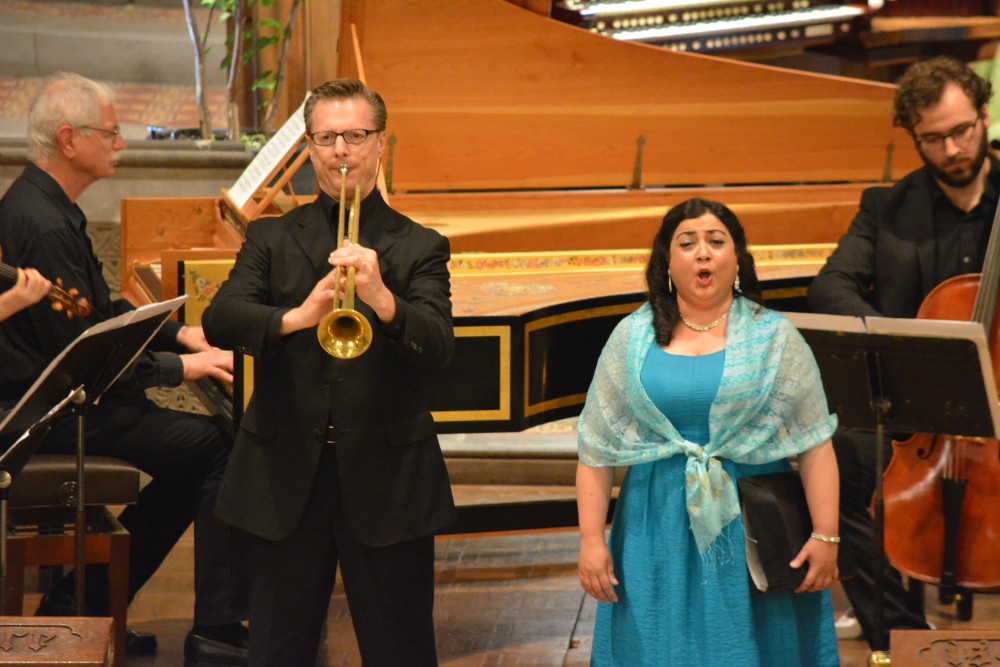 That sense of wanting to motivate others is clearly evident in your own musical motivation. You trained at Juilliard under the legendary violin pedagogue Ivan Galamian and went on to perform internationally as a soloist. You count Itzhak Perlman, Pinchas Zukerman, Yo-Yo Ma, and Emanuel Ax as friends. Like you, they are chamber musicians at heart. I suspect that nothing gives them more joy than to play great music together. What makes you singular, however, is your vision in providing opportunities for chamber music to flourish. You founded the Aeolian Chamber Players and then brought the ensemble to be resident at the Bowdoin International Music Festival which you also founded. More recently, you have focused your attention on Baroque music with the Bach Virtuosi Festival in Portland, Maine. From Elliott Carter and George Crumb at Bowdoin to Bach seems a remarkable and not altogether predictable journey, but the unifying factor, again, is great music performed by devoted chamber musicians.
That sense of wanting to motivate others is clearly evident in your own musical motivation. You trained at Juilliard under the legendary violin pedagogue Ivan Galamian and went on to perform internationally as a soloist. You count Itzhak Perlman, Pinchas Zukerman, Yo-Yo Ma, and Emanuel Ax as friends. Like you, they are chamber musicians at heart. I suspect that nothing gives them more joy than to play great music together. What makes you singular, however, is your vision in providing opportunities for chamber music to flourish. You founded the Aeolian Chamber Players and then brought the ensemble to be resident at the Bowdoin International Music Festival which you also founded. More recently, you have focused your attention on Baroque music with the Bach Virtuosi Festival in Portland, Maine. From Elliott Carter and George Crumb at Bowdoin to Bach seems a remarkable and not altogether predictable journey, but the unifying factor, again, is great music performed by devoted chamber musicians.
As you said, great music is great music. I found playing and commissioning new music by extraordinary composers challenging, exciting, having no idea what the future would bring. Bach was a constant from my teens to this minute, but his music has taken on different meanings over the decades. As a youth, it reached me probably more on a technical level. Now it is a solace, a compendium of the many meanings of life that no one better expressed in music.
I think I understand your idea of Bach as solace, even though as a player I continue trying to master the monumental technical challenges inherent in his trumpet writing. For me, at present, the solace comes in the movements I don’t play. ‘Et in terra pax’ from the Mass in B Minor would be the prime example. This May, the Bach Virtuosi Festival, which has performed in Portland, Maine since 2016, will have its debut season in New York. How did this come about and what will early music patrons hear?
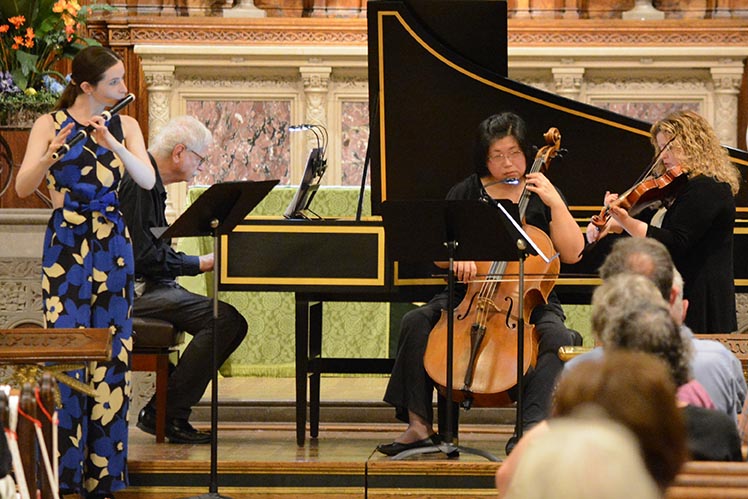 I had wanted for several years to bring the Bach Virtuosi Festival to New York, in addition to Portland. Three years ago, the wife of a dear friend died and, without any foreknowledge on my part, left a generous bequest to the Aeolian Chamber Players Inc, a tax exempt not-for-profit, without specifying how the monies were to be used. Although these funds were not enough to underwrite the festival in its entirety, I jumped at the chance to open in New York and started immediately to make plans toward making the festival a reality. I have called the opening concerts “The Eternal Bach”. This happened rather fortuitously. I read this winter about the Golden Record that is aboard Voyager One, the spacecraft NASA launched in 1977 in the quest for intelligent life should it encounter such in distant space. The Golden Record includes three works by Johann Sebastian Bach, the most by any composer. These three works fit wonderfully into the BVF repertoire and are included in our opening concert. One of them, the Brandenburg Concerto No. 2, features the trumpet, to be played, of course, by you.
I had wanted for several years to bring the Bach Virtuosi Festival to New York, in addition to Portland. Three years ago, the wife of a dear friend died and, without any foreknowledge on my part, left a generous bequest to the Aeolian Chamber Players Inc, a tax exempt not-for-profit, without specifying how the monies were to be used. Although these funds were not enough to underwrite the festival in its entirety, I jumped at the chance to open in New York and started immediately to make plans toward making the festival a reality. I have called the opening concerts “The Eternal Bach”. This happened rather fortuitously. I read this winter about the Golden Record that is aboard Voyager One, the spacecraft NASA launched in 1977 in the quest for intelligent life should it encounter such in distant space. The Golden Record includes three works by Johann Sebastian Bach, the most by any composer. These three works fit wonderfully into the BVF repertoire and are included in our opening concert. One of them, the Brandenburg Concerto No. 2, features the trumpet, to be played, of course, by you.
Lewis, I am already hard at work preparing! In addition to the festival concerts, there will be a special lecture entitled “The Eternal Bach” presented by your good friend and esteemed scholar Christoph Wolff. What is the significance of that intriguing title?
When I asked Christoph Wolff if he would open the festival with a talk on some aspect of Bach of his choosing, he answered yes, and what was the repertoire? I responded with the program being built around “The Eternal Bach”. He answered: “There are few names in music, western civilization, or global culture where the attribute “eternal” does not seem unsuitable, inappropriate, and hyperbolic. Johann Sebastian Bach is one of them.” Amen.
How wonderful that you are providing your audience with the occasion to ponder the significance of Bach and his music before the festival concerts begin. How can the GEMS community support you and the Bach Virtuosi Festival?
I think the most important thing is “gather round”. Come to the concerts. Hear the music of Bach performed by some of the greatest Baroque players and share our joy listening to the world’s greatest music by the world’s greatest composer.
Lewis, we hope many will take you up on it! We wish you and your festival success this season, and for many years to come!
Artist Spotlight ~ Upon Reflection

February 29, 2024
Upon Reflection: An Opera in Ten Images
Music ~ Frances White
Words & Images ~ Wendy Steiner
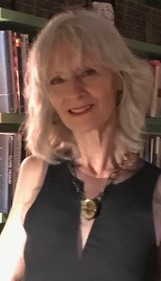 An interview between John Thiessen and Wendy Steiner
An interview between John Thiessen and Wendy Steiner
JOHN: Today we are joined by Wendy Steiner, co-creator and director of Upon Reflection: An Opera in Ten Images. It features soprano Sherezade Panthaki in a solo role accompanied by early music ensemble Parthenia, performing composer Frances White’s original musical score. Dr. Steiner is a scholar, cultural critic and public intellectual, who, in addition to being a librettist and photographer, has received awards from the Guggenheim Foundation, the American Council of Learned Societies, Bellagio, the NY State Council for the Arts, and the National Endowment for the Humanities. As the Richard L. Fisher Professor of English at the University of Pennsylvania, she taught and has published on aesthetics and art, and has written for The New York Times, London Independent, Guardian, LA Times, London Review of Books, and The Times Literary Supplement. Her latest book, The Beauty of Choice: On Women, Art and Freedom will come out this June from Columbia University Press. Welcome, Wendy.
WENDY: My pleasure, John.
 JOHN: It has been a delight to be on this journey with you, preparing for performances of Upon Reflection on May 4th at 7:30 pm and May 5th at 3:00 pm at New York’s DiMenna Center for Classical Music, 407 West 37th Street at 10th Avenue. As your fiscal sponsor, GEMS has been behind-the-scenes, helping with venue arrangements, artist contracts, tickets sales, marketing, and planning on-site services. But the creative side is wholly your collaborators' and yours. Let’s begin by having you explain the origins of Upon Reflection: An Opera in Ten Images. How did it come to be, what is it about, and why did you choose Sherezade and Parthenia as your performers?
JOHN: It has been a delight to be on this journey with you, preparing for performances of Upon Reflection on May 4th at 7:30 pm and May 5th at 3:00 pm at New York’s DiMenna Center for Classical Music, 407 West 37th Street at 10th Avenue. As your fiscal sponsor, GEMS has been behind-the-scenes, helping with venue arrangements, artist contracts, tickets sales, marketing, and planning on-site services. But the creative side is wholly your collaborators' and yours. Let’s begin by having you explain the origins of Upon Reflection: An Opera in Ten Images. How did it come to be, what is it about, and why did you choose Sherezade and Parthenia as your performers?
WENDY: The germ for this opera was a performance of Schubert’s Winterreise I saw at Alice Tully Hall in 2014. The artist William Kentridge had fused excerpts of his previous work into multi-screen projections, making no attempt to illustrate Schubert’s song cycle. I found the result revelatory: a contemporary artist and a romantic artist were in a sort of conversation that placed their differences and similarities in high relief. Ultimately, I realized, that is what we all do when we experience art. We bring ourselves to it and attempt to see ourselves in it, and sometimes, if the mirror is true, we come to recognize something profound.
A few years after the concert, in 2019, I presented a “digital music visualization” called Traces on the Farther Side at the Venice Biennale. Co-designer Andrew Lucia and I transformed Parthenia’s performance of Frances White’s ethereal music, note by note, into sprays of colored pixels that accumulated on a screen like a pictorial meditation. When I was taking the piece down that November, it happened that Parthenia was presenting a concert with soprano Sherezade Panthaki in the Venetian church of Santa Maria delle Penitenti. The combination of Sherry’s ravishing voice and the viols sounding in that evocative setting was so exquisite that, back in the States, I asked Frances whether, if we ever wrote an opera together, it could be created for these artists. And that is just what we did — all through the Covid pandemic.
The libretto grew out of ten photographs I had taken, all of them showing reflections in glass or water. I imagined them as the work of a young photographer who was giving an artist’s talk to the guests at her show. She would begin with an image shot inside a taxi in Times Square when she was on her way home from a performance of Schubert’s Winterreise. She had been crying in the taxi. Schubert was dying when he finished this work, and he had been just her age, thirty-one. The program said “the rosiness of life had left him.” Channeling Schubert’s desolation through his music, the photographer had felt her own rosiness gone as well, though she was not dying. As a woman, she had been trained to keep herself out of her work to avoid appearing “too feminine”. She was thus blocking the very empathy that had made Winterreise so valuable an experience for her, and “upon reflection,” she had decided not to do that anymore. So now at the gallery, she invites her guests to find her in her photographs, hoping that their shared vision will restore not only her “rosiness,” but theirs.
JOHN: Reflecting upon art from a different age as the stepping point for a new creative work — in this case restoring the “rosiness” that Schubert had made her realize she’d lost — seems a very powerful and hopeful response. Reflection is fundamental to your opera, but also in a wider sense, to your own creative writing and cultural criticism. How do you understand reflection influencing your work, as well as the life of your opera character?
WENDY: In my writing on art, I present beauty not as a thing or a definable property of things, but as a special interaction that a person can have with almost anything. This interaction carries a deep and often unexpected pleasure, and at the same time an awareness of ourselves experiencing that pleasure. Something has moved us, and as we see ourselves liking or even loving it, we note, too, that we have it in us to appreciate such a thing. That capacity is our beauty. With art, we also compare our pleasure — our taste — to that of other people who respond to the work. Art opens the possibility of communication, sharing, and empathy — or not, as the case may be. The cumulative back-and-forth that occurs among ourselves, the artwork, the artist, and others who discuss the work, write about it, perform and adapt it is like a hall of mirrors — a vast, constantly changing, wonky set of reflections. That is what culture is. Upon Reflection depicts it through an artist inviting her viewers to join in the interchange, as well as through the reflections in the photographs and the interplay of live, pre-recorded, and digital sound in Frances White’s music.
JOHN: In the field of early music, we do these things, unearthing forgotten manuscript scores, using instruments known to the composers, and learning instrumental and vocal techniques appropriate to the period. And there is a constant interaction with beauty, because in most cases, it is what has drawn us to a particular repertoire. In performance, we are guided by our research as well as our artistic awareness and sensibilities, which in turn create occasions for dialogue with our audience. In the case of Upon Reflection, what can we learn from your intentional choice of using a consort of viols and recorders?
WENDY: Frances chose to score the piece for early instruments, and given my long involvement with Parthenia and with recorders, I couldn’t have been happier. Early music often strikes me as very modern. Every experience of art involves a time lag between creator and audience, even when they are contemporaries. But the possibility of connecting with a sensibility distant from our own is all but irresistible. It extends our scope as embodied beings and fosters our imaginative suppleness toward each other. In Upon Reflection, the sounds of instruments played more than 600 years ago infuse romantic and contemporary musical idioms and digital fabrications. John, you told me about the viol consort from Montréal called Les Voix Humaines and in this opera we have another group of viol “singers” conversing with the breath-rich tones of recorders and the strains of an exquisite soprano. Frances' shakuhachi intervals echo with bel canto, Schubert, lapping water, and cocktail chatter in spatio-temporal leaps worthy of a superhero. And yet we see the connections — and hopefully, find them beautiful — each in our own way.
JOHN: You connect the old and the new, both musically and philosophically, in so many inspiring ways. But now, back to the immediate present! You are nine weeks away from the May 4–5 production of Upon Reflection at the DiMenna Center. Could you give us a sense of the timeline for final preparations?
WENDY: Sherezade Panthaki and Parthenia finished the pre-recordings last month, and Frances is now editing and mixing the files with our sound engineer, Bill Siegmund. Once these are final, videographer (and lutenist) Ryan Closs and I will create a projection track of animated photographs and surtitles. By April, this track should be complete, at which point Ryan and Frances will create a “digital script” for the performance, a plan for activating the pre-recorded sound and imagery during the live opera. Meanwhile, the soprano and instrumentalists will be rehearsing; I’ll be working out the blocking for Ms. Panthaki; and GEMS and publicist Kieran Walsh will be getting the word out to what we hope will be packed audiences at the DiMenna Center. To say that operas are three-ring circuses is an understatement.
JOHN: What an amazing mix of pre-recording and live performance elements. Pray the power doesn’t go out! Now, given the multiple musical and visual components in Upon Reflection, do you foresee a film version of the work which could be enjoyed by a much wider audience?
WENDY: Yes, a film is part of the plan. I have engaged a videographer and a sound engineer to tape the May 5th performance of Upon Reflection. Their recordings will be only raw footage for the eventual film, since the opera is permeated with pre-recorded sound and imagery that cannot be properly captured from a live performance. The editing will splice in these elements, in a process that will be complicated and, I suspect, costly.
JOHN: Productions like Upon Reflection are expensive, and of course dependent on financial support in addition to ticket sales. How can the GEMS community support your project and partner with you to sponsor further local performances, eventual tours, and the film version?
WENDY: So far, Upon Reflection has been a labor of love, but sadly, even love has limits. I would be tremendously grateful if the New York music community could support this project by donating on the GEMS website.
JOHN: Wendy, I know that many will want to support Upon Reflection and we wish you much success in May and beyond!
WENDY: Thank you so much, John, and thanks to everyone at GEMS. I look forward to seeing you at the show!
Remembering Richard Pace
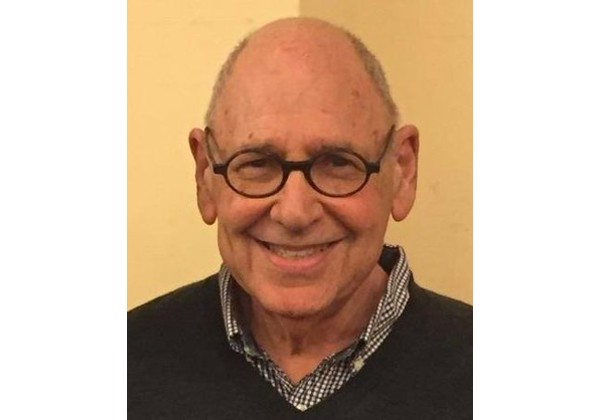
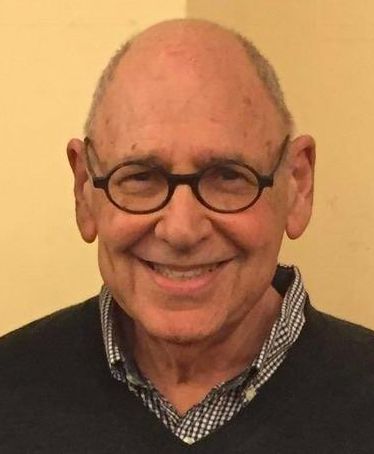 We are saddened to share the news that Richard Pace, a tireless supporter of early music and music education in New York City, passed away on Wednesday, March 13th.
We are saddened to share the news that Richard Pace, a tireless supporter of early music and music education in New York City, passed away on Wednesday, March 13th.
Richard was a loyal and generous contributors to GEMS, and enthusiastic supporter of many of the organizations we serve. He was the Board President of the education organization S’Cool Sounds (SCS), which was a project of GEMS before becoming an independent non-profit of its own.
Richard was a native New Yorker who credited his public school education for his life-long love of music. As he explained to S’Cool Sounds: “I, like so many baby boomers, started my musical education at PS 106 in the Bronx in the third grade. By fifth and sixth grades, I was part of the music classes who regularly played in band for school assemblies. I owe my musical literacy to the public education system, to which I am eternally grateful. Let us make sure that the current generation of students is given the same opportunity."
In addition to his role at S'Cool Sounds, he also led the boards of Amherst Early Music and the Oratorio Society of New York. He was a longtime member of WNYC’s board. Richard was beloved in the early music community nation-wide, and the music community in New York City. He made a difference to so many people and touched many lives.
We, like many others in the classical music community, will miss him dearly. Our condolences go out to his wife Lois and the entire Pace family.
Artist Spotlight ~ House of Time

March 7, 2024
House of Time
An interview between John Thiessen and Tatiana Daubek
 JOHN: We are joined by Tatiana Daubek, violinist and director of the early music ensemble House of Time. Welcome, Tatiana.
JOHN: We are joined by Tatiana Daubek, violinist and director of the early music ensemble House of Time. Welcome, Tatiana.
TATIANA: Thanks John! I’m grateful to be talking a little bit today about myself and House of Time, the ensemble I founded 10 years ago with Gonzalo X. Ruiz.
JOHN: When I first met you at the Boston Early Music Festival, you were studying at Boston University. Take us on the journey from then to now, especially the blossoming of your career in early music.
TATIANA: I have fond memories of my time in Boston, although it was a transitory time. I had embarked on a Master’s Degree in Violin Performance at Boston University with professor Dana Mazurkevich in 2006. She was lovely and allowed me to continue my Baroque violin studies (some teachers didn’t like that!) but I was on the search for learning more about period performance, especially Baroque violin. At the time, there were very few programs in the United States that offered degrees in Historical Performance unless one were to go to Europe. I took lessons here and there on the side with people including Elizabeth Blumenstock and Monica Huggett, who would subsequently lead the Juilliard program starting in 2009. BU was very supportive and allowed me to do my Master’s recital on both the modern violin and Baroque violin. So I played Ysaye and Piazzolla on my modern violin and a solo Bach Sonata on my Baroque violin. I was the first student who had ever done that — and I remember one of the violin professors saying after a jury to “allow” me to do such a thing, “Wow, Bach actually sounds good on the Baroque violin”. It was that moment when I had won the hearts of the old-school, very modern professors, and I think might have helped change some of the thinking in the string department. Anyway, fast forward to 2009, and my hopes and dreams were fulfilled after getting accepted into The Juilliard School’s Historical Performance department to study alongside a world–renowned faculty, and my true inspiration at the time — Monica Huggett. The two years at Juilliard were short but filled with wonderful memories, experiences, and exceptional colleagues. It was shortly after graduation from there that I knew I wanted to “do something” with my early music background, instead of waiting for the phone to ring for a job (which it did… but that’s another topic).
JOHN: I’m glad the BU violin professor noticed that Bach sounds good on the Baroque violin! How wonderful though that Dana Mazurkevich was so welcoming of your interest in the period violin and that you were able to continue your focus at Juilliard. Your ensemble House of Time emerged as a result of your studies at The Juilliard School and will celebrate its 10th year next season — a great accomplishment! House of Time is in residence at Manhattan’s Holy Trinity Lutheran Church and plays brilliant concerts throughout the United States annually. How did the group begin and what did you set out to do besides astonishing your audiences? Who are the members of the ensemble?
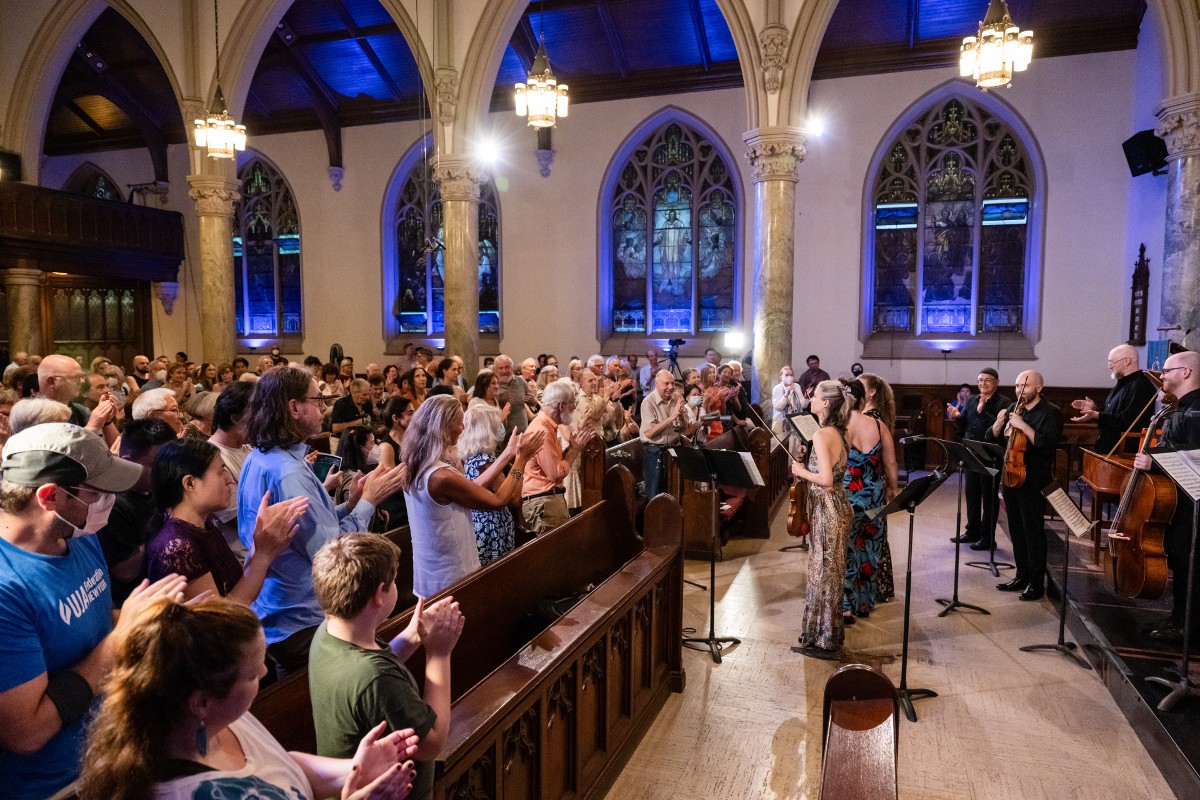 TATIANA: House of Time was formed in 2013, from Juilliard graduates and faculty. Our first performance, a house concert in Westchester County, was canceled due to lack of power from Hurricane Sandy! We re-scheduled, played the concert, and said that was fun… let’s do more! We then planned three concerts for the following season, including two at Holy Trinity and one at the Czech Center. Low and behold, that bit of steam propelled us forward. People liked us, audiences wanted more! In 2014, some colleagues of mine presented the New York Early Music Festival, with early music concerts all over New York City in different venues. I’d like to say this really increased our following and all of a sudden, we had a growing mailing list, and we were on a roll! Subsequently, we’d apply for grants from New York State and have received an annual NYSCA award for the past 8 years! Not only do we self-present concerts in New York, but we’ve played all over the country, from San Francisco and San Diego, to Las Vegas, New Haven, Michigan, and Milwaukee. Over the years, as a self-presenting ensemble, we are constantly tweaking the way we get people in the door. It’s definitely hard work! I can’t believe we’ve made it 10 years. One of our favorite annual programs to present is the Vivaldi Concerti Festival, where we invite outside guests to perform a concerto of their choice. This past year we chose to program Vivaldi’s Four Seasons. The program always includes a recent Juilliard graduate and notable guests including Krista Bennion Feeney, concertmaster of the Orchestra of St. Lukes, Elizabeth Blumenstock, former concertmaster of Philharmonia Baroque Orchestra, Aisslinn Nosky, concertmaster of the Handel and Haydn Society, and Cynthia Roberts, Professor of Violin at Juilliard’s Historical Performance Program. We are blessed with 4 core members — me on violin, Gonzalo X Ruiz on oboes, recorder and guitar, Elliot Figg on harpsichord, and Matt Zucker on violoncello and viola da gamba.
TATIANA: House of Time was formed in 2013, from Juilliard graduates and faculty. Our first performance, a house concert in Westchester County, was canceled due to lack of power from Hurricane Sandy! We re-scheduled, played the concert, and said that was fun… let’s do more! We then planned three concerts for the following season, including two at Holy Trinity and one at the Czech Center. Low and behold, that bit of steam propelled us forward. People liked us, audiences wanted more! In 2014, some colleagues of mine presented the New York Early Music Festival, with early music concerts all over New York City in different venues. I’d like to say this really increased our following and all of a sudden, we had a growing mailing list, and we were on a roll! Subsequently, we’d apply for grants from New York State and have received an annual NYSCA award for the past 8 years! Not only do we self-present concerts in New York, but we’ve played all over the country, from San Francisco and San Diego, to Las Vegas, New Haven, Michigan, and Milwaukee. Over the years, as a self-presenting ensemble, we are constantly tweaking the way we get people in the door. It’s definitely hard work! I can’t believe we’ve made it 10 years. One of our favorite annual programs to present is the Vivaldi Concerti Festival, where we invite outside guests to perform a concerto of their choice. This past year we chose to program Vivaldi’s Four Seasons. The program always includes a recent Juilliard graduate and notable guests including Krista Bennion Feeney, concertmaster of the Orchestra of St. Lukes, Elizabeth Blumenstock, former concertmaster of Philharmonia Baroque Orchestra, Aisslinn Nosky, concertmaster of the Handel and Haydn Society, and Cynthia Roberts, Professor of Violin at Juilliard’s Historical Performance Program. We are blessed with 4 core members — me on violin, Gonzalo X Ruiz on oboes, recorder and guitar, Elliot Figg on harpsichord, and Matt Zucker on violoncello and viola da gamba.
JOHN: You have done all the rights things for House of Time, including self-presenting — a daunting challenge — but one which provides true artistic freedom. You have built an extensive Rolodex and you know your patrons personally. NYSCA support, in addition to that from your avid followers, allows you to present fabulous projects. Now, Tatiana, not only are you a virtuoso violinist, but you are also an accomplished photographer and videographer. How do these two fields complement each other both artistically and for House of Time?
TATIANA: Thanks for asking this question, John! A lot of people ask me how I “do it all!” I think that as a musician, I have a keen sense of intuition for capturing people’s real essence on camera. I’ve been told that I make my subjects feel at ease, especially when they come in completely mortified of having to pose in front of a camera. My photography career started when I was living in Boston almost 20 years ago. I had made a few friends who were getting real certificates in photography, and I owe it to them for all I learned. Of course, there’s always trial and error but it’s important to ask questions, get feedback, and take a lot of pictures! One day, a colleague of mine asked me to take his photo… that blossomed into a career of musician portraits, and to this day, I am splitting my time between performing and capturing people on camera. During the pandemic, we were shut up in our homes, but House of Time still wanted to play music and present it to our fans. We invested a bit of time and money into a home recording studio, and with Gonzalo’s audio engineering background, coupled with mine in photography, we made the plunge to purchase some video cameras. Still learning along the way, it’s also blossomed into a third videography career. The need for high-end recordings is at an all-time high, and we’ve been very busy.
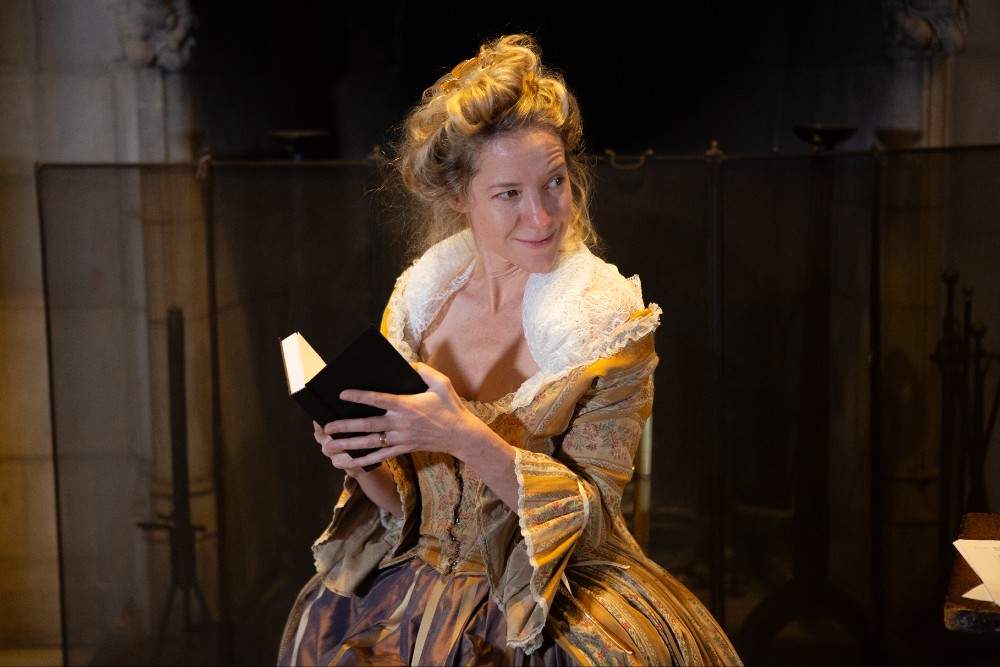 JOHN: How interesting! As a result of the pandemic, GEMS quickly pivoted to livestreaming our Midtown Concerts series on which House of Time has appeared frequently. Your group has a fascinating performance coming up Saturday, March 23 at Riverside Church entitled A Poisonous Affair, a play written by your husband and early music phenom Gonzalo X. Ruiz, and starring acclaimed actor Brooke Bloom, in a portrayal of Louis XIV’s favorite mistress Madame de Montespan. The reign of Louis XIV from 1643 until 1715 represented a time of significant importance for French music. Will repertoire from around the time of the scandal known as the Affaire des Poisons (1677) feature prominently in your production?
JOHN: How interesting! As a result of the pandemic, GEMS quickly pivoted to livestreaming our Midtown Concerts series on which House of Time has appeared frequently. Your group has a fascinating performance coming up Saturday, March 23 at Riverside Church entitled A Poisonous Affair, a play written by your husband and early music phenom Gonzalo X. Ruiz, and starring acclaimed actor Brooke Bloom, in a portrayal of Louis XIV’s favorite mistress Madame de Montespan. The reign of Louis XIV from 1643 until 1715 represented a time of significant importance for French music. Will repertoire from around the time of the scandal known as the Affaire des Poisons (1677) feature prominently in your production?
TATIANA: You are right, this performance is fascinating! Not only does my oboe extraordinaire husband perform as the oboist but he actually wrote the play (wait, he writes plays now too?) I am super impressed. Initially, it was my idea… I knew I wanted to work with my good friend Brooke, who’s an accomplished actress and knowing that she enjoys period roles, I thought we could maybe do something involving Louis the XIV’s favorite mistress, Madame de Montespan, who left us a thick book of her memoirs. I said to Gonzalo, “Any chance you can come up with something interesting that involves these memoirs and includes Brooke?” John, you ask if we’ll be playing music from the period and the answer is YES! We’ll perform almost all the music Montespan would have likely heard at court: Marais’ Trios and unmeasured preludes of Louis Couperin. Marais’ famous Sonnerie de Sainte-Geneviève du Mont de Paris, "The Bells of St. Genevieve”, features prominently during the Affair of the Poisons scene. It’s hard to leave out such a scandalous time at court, where everyone was accused of poisoning one another. One of my favorite lines that Gonzalo wrote in the Poisons scene is, “Cooks and servants were arrested, but mon Dieu, if one were to seize all the bad cooks in Paris, the jails would have no room for murderers and thieves”. The big question that Gonzalo’s play explores is if indeed Mme de Montespan is guilty or innocent of the accusations against her. You’ll have to come and decide for yourself!
JOHN: What a wonderful cliffhanger! How did you come to choose Brooke Bloom to play Madame de Montespan? And how did you choose the venue?
 TATIANA: Brooke and I met in 2019 when she moved into my complex at Hudson View Gardens and she also had a young child the same age as mine. Our children became instant best friends at the tender ages of one and two, and we’ve become good friends as well. We see each other almost every day in some capacity or another. Brooke has an accomplished career in film, television, and theatre and we frequently talk about similar aspects of the creative process. A veteran of the New York stage, Brooke won an Obie Award for Best Actress, and garnered a Best Actress Drama Desk nomination for her work in Clare Barron's Off-Broadway play You Got Older. You can read more about her here. I certainly haven’t seen all the things she’s done, but when I watched a couple of episodes of her in the TV show The Gilded Age and then I finally saw her perform live on stage a year ago in Lucy, a play about motherhood, nannies, and whom we invite into our homes at Audible's Minetta Lane Theatre, I knew she’d be a great fit to do something with House of Time. The venue, the Rockefeller Lounge on the 9th Floor of Riverside Church, is incredible. It was decided late in the game but when we saw it, we said “This is perfect!” It has the feel of old Europe — a bit like Versailles, with its large columns, vaulted ceilings, and gorgeous inviting orange tones.
TATIANA: Brooke and I met in 2019 when she moved into my complex at Hudson View Gardens and she also had a young child the same age as mine. Our children became instant best friends at the tender ages of one and two, and we’ve become good friends as well. We see each other almost every day in some capacity or another. Brooke has an accomplished career in film, television, and theatre and we frequently talk about similar aspects of the creative process. A veteran of the New York stage, Brooke won an Obie Award for Best Actress, and garnered a Best Actress Drama Desk nomination for her work in Clare Barron's Off-Broadway play You Got Older. You can read more about her here. I certainly haven’t seen all the things she’s done, but when I watched a couple of episodes of her in the TV show The Gilded Age and then I finally saw her perform live on stage a year ago in Lucy, a play about motherhood, nannies, and whom we invite into our homes at Audible's Minetta Lane Theatre, I knew she’d be a great fit to do something with House of Time. The venue, the Rockefeller Lounge on the 9th Floor of Riverside Church, is incredible. It was decided late in the game but when we saw it, we said “This is perfect!” It has the feel of old Europe — a bit like Versailles, with its large columns, vaulted ceilings, and gorgeous inviting orange tones.
JOHN: I understand that following this special performance on March 23, there will be a reception.
TATIANA: We hope everyone will want to attend, so they can meet us afterwards with a glass of wine, and most importantly, chat with the writer, Gonzalo X. Ruiz and the actress Brooke Bloom. This reception is a little different from usual; one will need to purchase a premium ticket that includes the reception. We love connecting with our audience after all our shows.
JOHN: GEMS is happy to help behind the scenes as your fiscal sponsor and we wish you, Gonzalo, Brooke, and the rest of the cast the best of success. We look forward to the film version of A Poisonous Affair (hint hint) sometime soon! How can GEMS’ early music community support House of Time for this and your other fabulous projects?
TATIANA: We’ve been thrilled that GEMS is so supportive for early music in New York and to be fiscally sponsored by your organization. Anyone interested in supporting us can donate here. We hope this project opens up some new audiences for us — especially those who might like opera, staged productions, or something with a story.
JOHN: I’m sure A Poisonous Affair will further increase House of Time’s audience. Good luck with the production!
View House of Time in action:
Artist Spotlight ~ Ruckus

February 2024
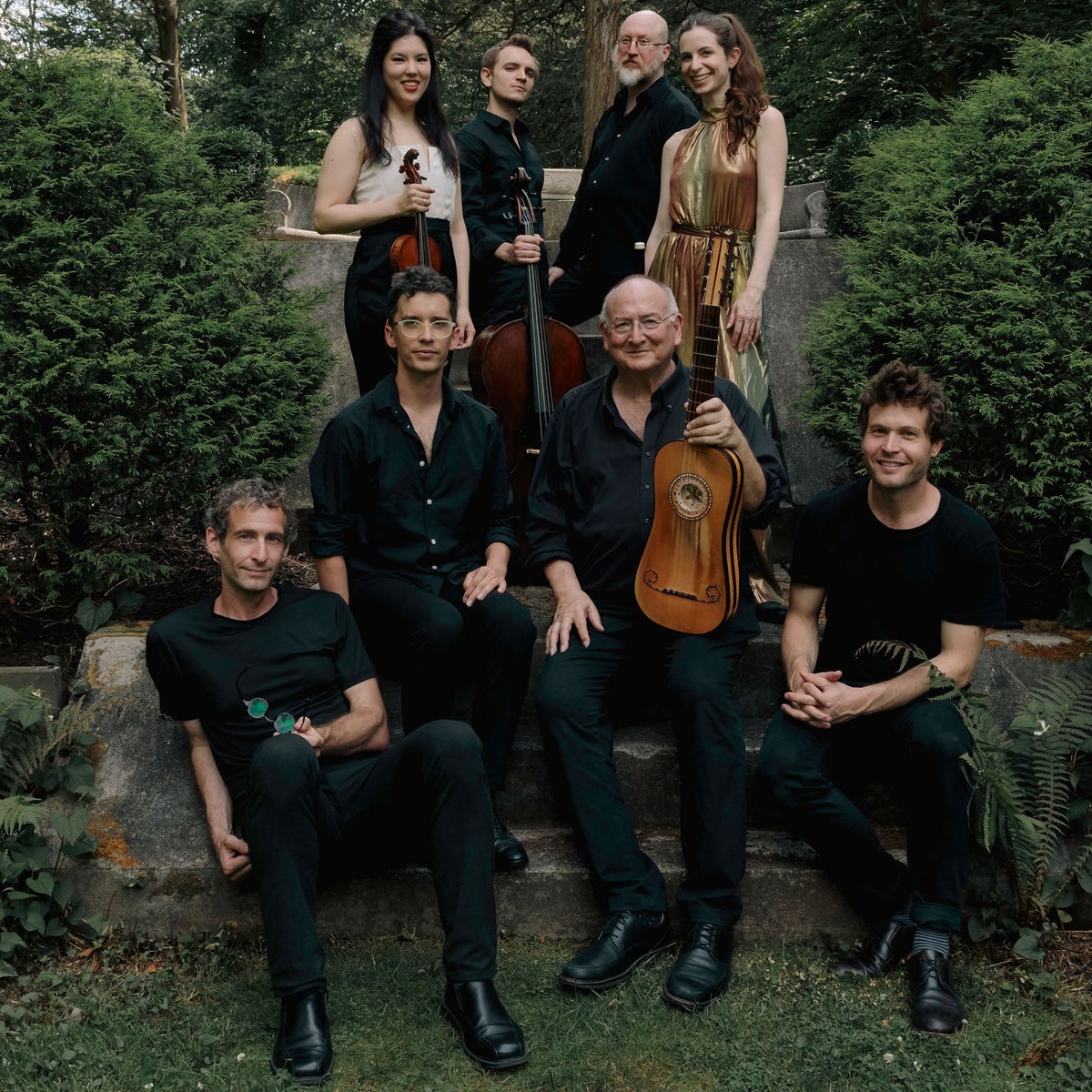 An interview with John Thiessen and Clay Zeller-Townson
An interview with John Thiessen and Clay Zeller-Townson
JT: We are joined today by Clay Zeller-Townson, virtuoso bassoonist, and the director of Ruckus, one of GEMS fiscal sponsored ensembles. Welcome.
CLAY: It’s a pleasure to be here speaking with you John, and thanks for all you do to support ensembles in our field!
JT: Clay, working with Ruckus and other early music ensembles is such a joy. GEMS is there to help in any way possible. Now, to your superlative group… It seems that the heart of Ruckus’ raison d’être is a sense of playfulness, inventiveness, and subversion. Can you speak to that?
CLAY: In our band, we know that our best, most alive and vibrant music making comes from our feeling free and playful. We "play" music, don’t we? So, we built a space in Ruckus for this group of like-minded musicians for that to happen. If we aren’t giggling, something is wrong. If we love the way it sounds, then it’s correct.
JT: Humor and joy in music-making. What could be better? Ruckus operates as a core ensemble, a basso continuo group, along with collaborators. Why the distinction and what were your models when you formed the core group?
CLAY: I’ve always understood continuo practice to be THE THING in Baroque music. It is the unanswered question in the score, it is the tool to create stark drama, and a direct path to unique expression. I knew that to make a Baroque ensemble that had a real personal sense of style, the continuo section had to be extremely tight. I learned this truth through my exposure to Boston Early Music Festival’s recordings of Lully operas and my classes with lutenist Paul O’Dette back at the Eastman School. But just as much as BEMF showed me how Baroque music DOES SWING, we are always looking at rhythm sections from other genres for lessons. The Basie Band, of course, Duke Ellington when Jimmy Blanton was on bass, right now an Irish trad band from the 70’s called The Bothy Band, and, of course, …The Beatles.
JT: Certainly, Baroque music finds its best groove when there is a cohesive, communicative, and inventive continuo section, but too often, period ensembles are biased toward treble instruments and voices making them "top-heavy". It is so enjoyable to listen to and see Ruckus follow the historical model of having at least as many continuo instruments as upper parts.
CLAY: Continuo is a fabulous, delicious texture machine! The fun house kaleidoscope! Plus, we love being maximalist.
JT: Another interesting aspect is that Ruckus prioritizes period music, roots music and new music in equal measure, which again, is not the norm for early music ensembles. How do you understand the interplay among the three?
CLAY: Look, it’s ALL new the moment it happens. When we play Handel, we are making "new music". We don’t think too much about it, because period, roots and new music are just in our DNA as the creative and curious musicians we are. Paul, our guitarist, comes from a folk music background; Elliot, our harpsichordist, is a composer by training; and so is Doug, our bassist. It really depends on the project and the music we are curious about — it usually just shows us what it wants to do. Because we have had a lot of time together over the last decade, it's usually pretty clear, and sometimes that means Handel meets Lachenmann meets Punch Brothers.
JT: Ruckus has an interesting concert coming up on February 25th at Town Hall in New York featuring music of G.F. Handel and Ignatius Sancho (ca.1729–1780). Tell us about this program. How did the pairing of composers come about and who will join you on stage?
CLAY: We are super excited to be at People’s Symphony coming up. Two rockstars are joining us: Emi Ferguson on flute and Rachell Ellen Wong on violin. The show is built around Handel Trios and Sancho’s Country Dances, and together, they give a rich, rocking portrait of 18th-century London music making. We are really aiming to be a dance band here and we are inspired by the countless period descriptions of dances happening across the English speaking world: held hands, sweating, spinning, and laughing all through the night. And Sancho is such a cool character. His is a great story to tell.
JT: Because of what you do and how you do it, Ruckus’ performances must inspire all kinds of audience response. What is the thing you most like to hear from your fans after concerts?
CLAY: I just wish I could have been DANCING!
JT: Clay, GEMS wishes Ruckus continued success. You inspire us with your joy, virtuosity, and openness and hope Town Hall will be packed to the rafters February 25th!
Listen to and watch Ruckus in action:
Watch the December 7 Midtown Concerts here!
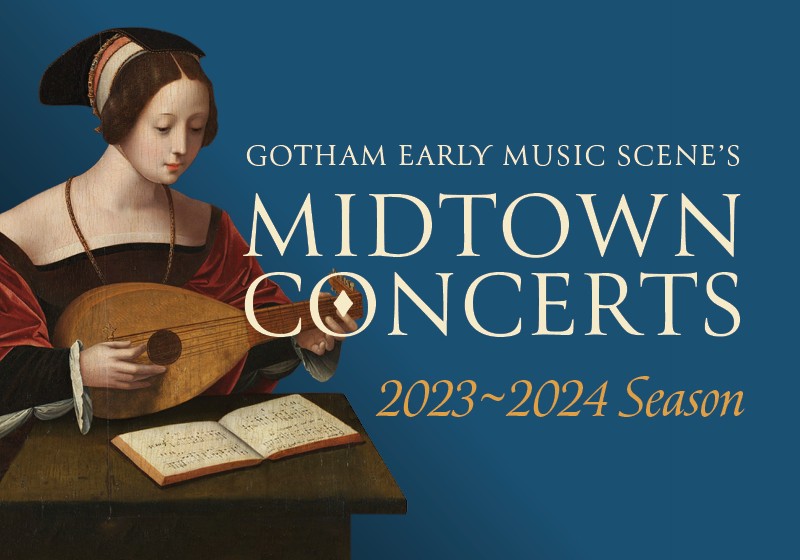
The December 7 Midtown Concerts will NOT be live streamed.
Due to technical issues, we will NOT be live streaming the concert this coming Thursday, December 7, but will record it and premiere it on our YouTube channel at 7 pm.
Visit the Midtown Concerts or YouTube websites to access our channel and this concert as well as most of our previous concerts. We are very hopeful that the the live streaming of our concerts will be resumed next week.
Collectio Musicorum featured in The New York Times
Collectio Musicorum was featured in an article in The New York Times on Friday, Oct 27, regarding their recent program about music from Shakespeare's First Folio. Much of this program was performed on our Midtown Concerts series here.
Congratulations to Jeff Dailey and the musicians!
COVID-19 PROTOCOLS
Wearing a KN95 or N95 mask is currently strongly recommended (but not required) at GEMS events.
Vaccinations are encouraged, but proof thereof is not required for entry into our events.
- All artists, audience members, and staff are encouraged to stay properly masked with a KN95 or N95 mask once inside the venue where a performance takes place. The mask should fully cover the nose and the mouth. Please note that some musicians may choose, once on stage, to perform unmasked.
- In the event that Covid-19 remains a potential danger to health, GEMS reserves the right to mandate mask wearing by our patrons, guided by city and state law, and CDC guidelines.
- COVID Status: If you have tested positive for COVID, or conversely, if you have been exposed to COVID-19 and not had a subsequent negative test, please contact GEMS for a refund and do not attend the event you’ve purchased a ticket for.
Disclaimer: An inherent risk of exposure to COVID-19 and other viruses or bacteria that cause sickness exists in any public space where people are present. We cannot guarantee that you will not be exposed to such pathogens during your attendance at our event.
By attending our events in person, you voluntarily assume all risks related to exposure to infectious disease and hereby waive all potential claims relating to such risks.
Safety and Service: Gotham Early Music Scene is focused on facilitating outstanding early music performances while keeping our patrons, musicians, and staff safe. We pledge to follow relevant CDC and City guidelines – and in some cases to go beyond them – for those events we service or produce/co-produce.
Please arrive no later than 10 minutes before the start of any program. We cannot guarantee seating for anyone who arrives later.
In the event that COVID-19 infection rates should increase to a level where GEMS chooses to require masks and/or social distancing at events, we reserve the right to limit the number of concert attendees. In such circumstances, subscribers would be given first access, and then a reduced number of single tickets made available.
Early music is one of the balms that helps all of us maintain our balance and calm in these stressful times. Thank you for showing forbearance as we institute these safety measures, which are designed to keep everyone feeling confident and protected as we return to in-person events and rediscover the joys of live music.
We thank you for your patience as we navigate this evolving situation together.
Join our mailing list to receive email updates.
View the Midtown Concerts past live streams here. View other early music videos here.
View our growing list of online early music videos here.
Artist Spotlight ~ Concordian Dawn
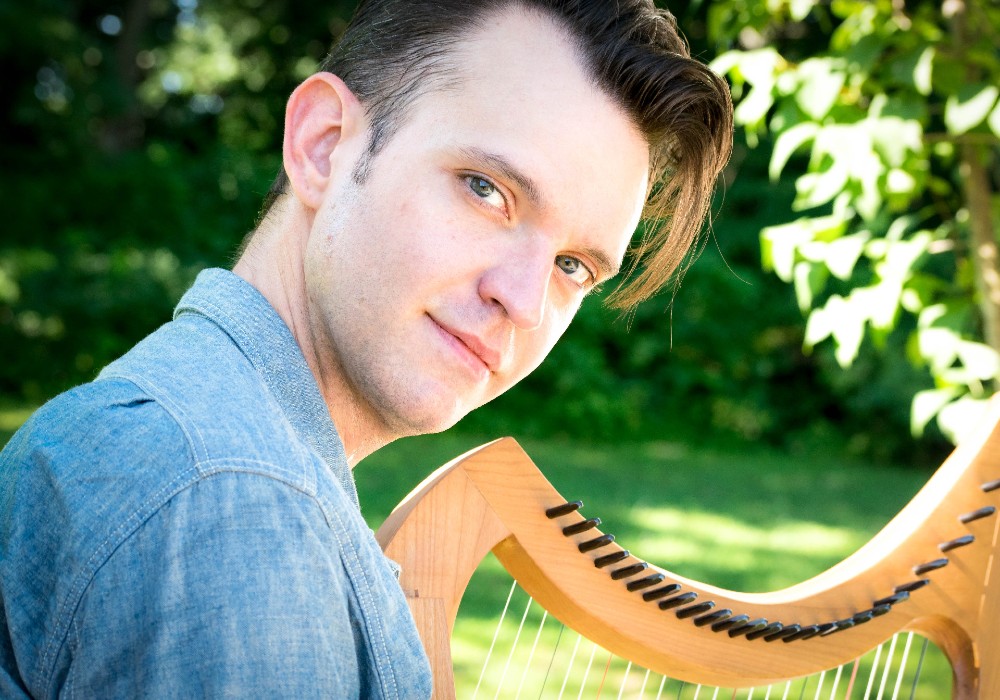
May 2023
An interview with director Christopher Preston Thompson
Christopher, thank you so much for joining us! We are thrilled that Concordian Dawn is part of the GEMS family and want you to know how much we treasure your ensemble.
Can you tell us what drew you to the study and performance of Medieval music?
First, I would like to thank you very much for your kind words and for inviting me to do this interview. GEMS continues to give such great support to Concordian Dawn, and we value our relationship with you very much. Regarding what drew me to Medieval music, it was mostly a fascination with the evocative sound world and a curiosity to get to know it more intimately. After I moved to New York City and started getting hired to do early music gigs, I encountered Medieval music performances in real time for the first time — not just on recordings or in the classroom, as before, but live and in-person. It was very intriguing and exciting. At one point, I saw a colleague accompany herself on Medieval harp while singing a troubadour song, and I was totally gripped by it. I thought it was one of the most beautiful things I’d ever witnessed, and I had to try it myself. That experience, in particular, opened the flood gate, and after I got my footing with the harp I founded Concordian Dawn as an outlet for more Medieval music experimentation and discovery. I’m very happy to be joined by some amazing colleagues in the ensemble: Amber Evans, David Dickey, Clifton Massey, Thomas McCargar, and Niccolo Seligmann. They are absolutely fabulous musicians, and it’s an honor to explore this amazing repertoire with them. On our recent projects released over the last year and half, we’ve also had Michele Kennedy, Karin Weston, and Andrew Padgett on board, and though they are not performing with the ensemble this season, I’m equally honored to have them remain an important part of our group’s trajectory.
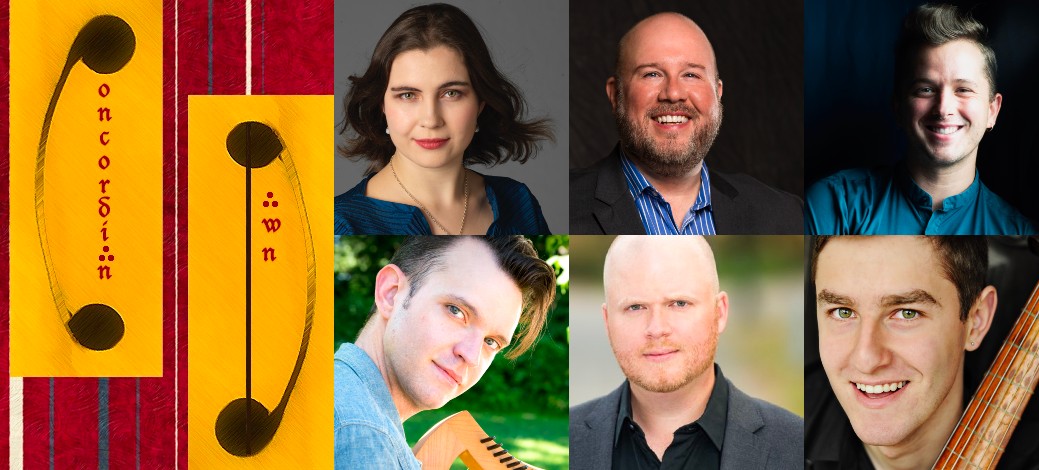
When listening to Medieval music, 21st-century listeners can sense the music speaking to them, even at a remove of several centuries. Can you speak to this?
I often think of Medieval repertoire as material that can help us form a deeper understanding of our modern lives. At the core, we haven’t changed all that much since the Middle Ages. Details surrounding us have changed; technology has expanded in some ways; the world is probably louder and certainly filled with more electronic gadgets now than it was then. But, we still want, feel, and deal with the same things. Politics, war, plague, social struggle, religious fervor juxtaposed with skepticism or outright anger towards religion and/or hypocritical religious institutions, love, sex, heartbreak — all of these very modern issues that are inherent in our 21st-century lives are central to Medieval repertoire. When placed within a musical context that can be, at times, breathtakingly beautiful, and at other times strikingly modern-seeming in its peculiarity and its treatment of dissonance and consonance — and everything in between — there’s a lot to connect with for a 21st-century audience.
You mentioned the curiosity that led you to form Concordian Dawn? What else shapes the group and how do you select the repertoire you perform?
One of our foremost priorities as an ensemble is to explore primary source material and how the socio-philosophical mindset of those from centuries ago can connect with a modern audience. Our programs are most often shaped around text-driven themes, and we hope the programs help deepen our understanding of our own position within the universe. And, of course, sometimes our programming is commission driven, as in the quartet concert we performed at the Santa Cruz Baroque Festival in March.
Speaking of that performance in Santa Cruz, the GEMS audience was fortunate to hear Concordian Dawn preview the program, entitled “Order in Fours,” on our Midtown Concerts series. Can you tell us about your choice of music for those performances?
Indeed. The commission from SCBF was for a concert on their 50th Anniversary season, themed Powers of Four—essentially a season of quartet concerts. So, we developed a concert that plays with the idea of “fours” in various configurations: polyphonic songs composed for four voices and performed by four or more musicians; monophonic songs and instrumental dances arranged for four performers; a polyphonic song for three voices performed by four musicians; and a monophonic song arranged for no more than four performers at one time. When SCBF invited us to perform such a concert of Medieval quartets, specifically requesting organum quadruplum by Notre-Dame school composer, Pérotin, two other late Medieval French composers immediately sprang to mind as a perfect complement to the organum — Guillaume de Machaut and Philippe de Vitry. Both composers are a mainstay of our repertoire, and this commission gave us a great opportunity to add Machaut’s Messe de Nostre Dame to our repertoire, which had been something we wanted to do for some time. Of course, no Concordian Dawn concert would be complete without, at least, a couple of beloved trouvère songs. And, for balance, we peppered in a couple of earlier Medieval reconstructions and a few of our favorite Medieval instrumental dances.
Thinking beyond musical texture and performance forces, however, “Order in Fours” is grounded in symbolism surrounding the number four, which is considered by scholars to be the number of material order. In the Middle Ages, the number represented stability, a firm foundation, and order in the universe. Today, we find such order in a variety of ways. Some find it through learning, philosophy, and well-crafted art (“Tunc me discussa” and In virtute / Decens / Clamor); some through Hope as the remedy to Fortune (“Dame, de qui toute ma joie vient” from Le Remede de Fortune); some through the passage of time, the phases of the sun and moon, natural order, and the completion of justice (“Phebi claro” and Tribum / Quoniam / Merito). Others find it through salvific grace, mercy, and a belief in the firm foundation of religion, all reflected in the four points of the cross or other religious iconography (“Viderunt omnes” and La Messe de Nostre Dame). And, for some, such order is grounded in a transformative fin’amor, or true/refined love for another (“Fine amour en Esperance” and “Quant voi la flour boutener”). All of the repertoire on the program explores such symbolism through music of the 11th through 14th centuries that exhibits a proliferation of intervallic order: consonance in perfect musical fourths and Pythagorean perfections.
Your recent West Coast tour included a performance lecture at the San Francisco Conservatory of Music? How did you structure that session?
We centered the presentation around performance practice issues, such as notation and rhythmic interpretation, accompaniment and improvisation, text-inspired reconstructions and interpretations, intertextuality and polytextual musical interplay. We looked at manuscript images from various primary sources and discussed the issues at hand, and then the ensemble performed musical examples. The students were very interactive and asked great questions, so we had fantastic discussions about all the material.
Can you tell us about your collaboration with scholar Sarah Kay and the publication of Medieval Song from Aristotle to Opera (Cornell University Press and MSR Classics, 2022)? The title is fascinating. Does it imply the consideration of timeless issues regarding the human condition?
Absolutely. Collaborating with Sarah Kay on Medieval Song from Aristotle to Opera was a huge pleasure and honor. Her work is fresh and innovative, and this project is no exception. As such, it’s quite complex to try to summarize in a few sentences. Suffice it to say the book and its accompanying website explore ecologies of song in order to reimagine distinctive ways of sounding words. Medieval French and Occitan song comprise the bulk of repertoire analyzed alongside earlier poetry, later operatic works, and Aristotelian philosophy. Kay’s anachronic approach argues for a perspective on the manuscript song transmissions as instances of multi-media, quasi-operatic performances. The book is in dialogue with a companion website, which houses over three hours of recorded material by Concordian Dawn, editions of manuscript transcriptions and reconstructions that I made for the project, Sarah’s translations of original song texts, and performance-reflection essays I wrote to place the recordings in dialogue with her book.
It’s a multi-media, interdisciplinary resource that I am quite proud of, and the companion website is freely accessible. Explore website here
The book is available in hard copy or as an e-book here.
What’s next for Concordian Dawn? Are your future projects related to your own scholarly interests?
They are! It seems that my own scholarly interests are unavoidable when developing future projects for the ensemble. We’ll be releasing highlights of Medieval Song from Aristotle to Opera as an album this summer through MSR Classics, and we’ve got several concerts lined up featuring material from our debut album, Fortuna Antiqua et Ultra (available here). Plans are developing to record an album of Medieval carols, inspired by our annual Medieval lessons and carols program at St. John’s in the Village, NYC, and we hope to release that album in 2024 in time for the holidays. We recently recorded some new, medieval-inspired compositions by David Yardley, which will be released on his forthcoming album, and we have some more collaborations in the works, which we’ll be able to announce in the coming months. We have a residency at UC-Davis in February of 2024, and we’ll be performing in Pennsylvania, Princeton, and New York City this Fall.
For more information or to sign up for our mailing list, please visit www.concordiandawn.com, and feel free to reach out to us via our website anytime.
Listen to Concordian Dawn's debut album here:
Remembering Joan Faber
We are saddened to report that Joan Faber, a great friend of GEMS and supporter of the larger early music community, died last week. Joan was a familiar presence at many early music concerts in the area, and with her husband Peter were major financial supporters of several organizations, including GEMS, Music Before 1800, and the Boston Early Music Festival. Her quick mind, amiability, valuable business experience, and warm personality will be sorely missed by all of us.
House of Time at Early Music Now
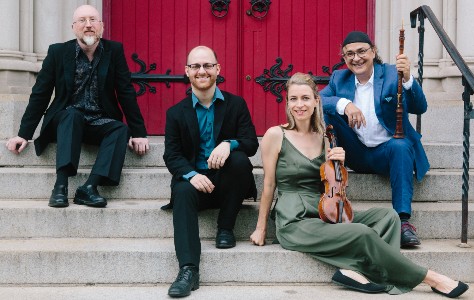
Read a preview of House of Time's appearance at Early Music Now in Milwaukee on Saturday, April 29 at 5 pm:
Artist Spotlight ~ Twelfth Night
April 2023
Twelfth Night is an exciting ensemble with a bright future. GEMS sat down with co-directors David Belkovski and Rachell Ellen Wong to hear more about the group.
 David and Rachell, you are both graduates of The Juilliard School’s Historical Performance program. Is that where you met?
David and Rachell, you are both graduates of The Juilliard School’s Historical Performance program. Is that where you met?
Rachell: Yes! We met in 2018, I was starting my second year and David was starting his first. We had a lot of mutual friends who kept suggesting that we should play together and so we started reading together early in the semester. Our first collaboration was through Bach’s B minor obbligato sonata. We played it for a masterclass with Rachel Podger and she was complimentary of our playing and suggested we had a good team going. So we listened to her.
What inspired you to form an ensemble?
David: Our chemistry as a duo led to hours and hours of musing, musicking, and lofty idealizing. We wanted to try for bigger and more daring ventures, following in the footsteps of familiar North American and European early music giants.
Who are the other members of your ensemble and how do you choose your colleagues?
David: The ensemble varies according to the repertoire, on a project-to-project basis. There are so many wonderful and exciting players in this field and we intend to bring everyone into the fold. Rachell and I maintain a clear vision for each program and have strong feelings about period performance more generally. Much like the music-making in the past, the keyboardist and violinist must set the tone with conviction, and allow plenty of room for exploration in the rehearsal space.
Rachell: We highly value a rehearsal process that is both musically and personally fulfilling for everyone involved. We want individual personalities to flourish and coalesce. David and I have often found ourselves in situations where we feel used and unappreciated as musicians, so we work very hard to ensure our performers feel emboldened.
There is a high level of energy and excitement in your live performances. You both seem to approach music this way, but is the “Twelfth Night way” something you intend, or does it just simply happen?
Rachell: Thanks so much! It definitely just happens. Both David and I dislike putting on emotions just for performance’s sake — I believe you genuinely have to feel whatever it is that you're feeling for it to come across to the audience. We both love the music we play together and the people we play it with; that’s something we prioritize above all else.
Even when we first started to rehearse it was clear our style of rehearsal was extremely similar. I like my rehearsals to be high energy, and fast paced a lot of the time, which even from the beginning, David matched. In our rehearsals, if I have an idea, we don’t usually have to even use words to describe what we want but just use the music to guide the result we want. And it’s the same in performances. Often, we are doing things in concert we’ve never done in rehearsal, and because I trust David so much, I always feel this freedom of music making I have never had with anyone else.
Where has Twelfth Night performed this season and what’s coming up next?
Rachell: We have had a wonderful season so far, getting to perform in a lot of new and exciting venues! Our travels included Nashville, ChamberFest Brown County in Indiana, Reno’s Apex Concert Series, Chatham Baroque in Pittsburgh, Tucson’s Arizona Early Music, Music Before 1800 here in New York, and also, of course, for GEMS! Our last concert this season is for the Stissing Center in Pine Plains, New York.
Regarding what’s coming up next, we are so proud to be making our Carnegie Hall debut next season on May 23rd, 2024! Other performances are in the works, too; we are excited about going to Utah to play on the Logan Chamber Music series. We are currently planning a Haydn and Mozart orchestral program on period instruments to be held in New York.
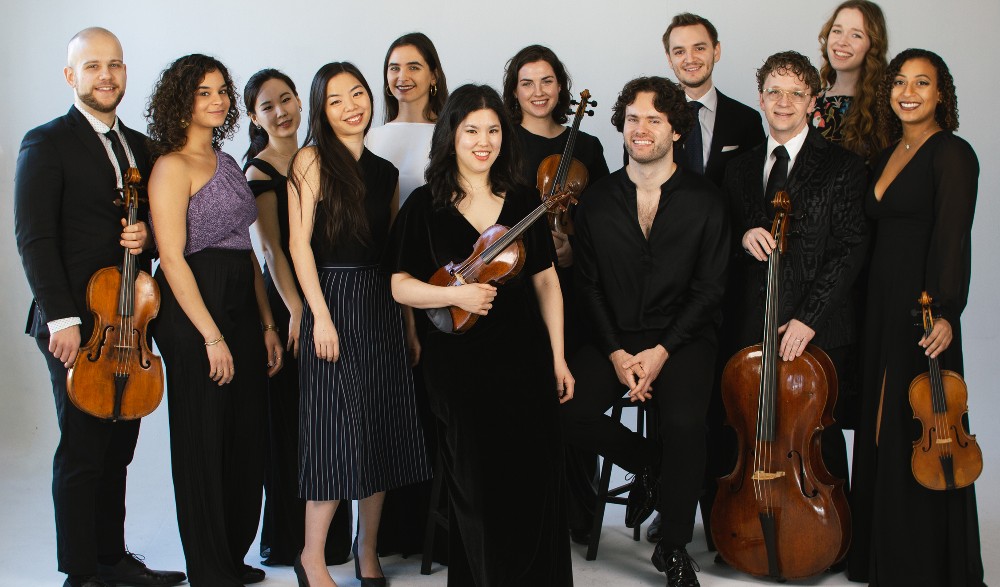
How do you schedule your concert and tour dates around your own busy solo schedules, and how do you decide where and when to rehearse?
Rachell: Fortunately, concerts are being scheduled far in advance so finding concert availability is pretty easy. But scheduling rehearsals is extremely tough. Trying to find times where we both are in New York and also available is hard, but for next season we have blocked out specific weeks to only focus on Twelfth Night. We always have rehearsals at David’s place in Washington Heights. Usually, if we know we will be on the west coast at the same time, we try to find concerts nearby. We expect Twelfth Night to be our primary focus in the near future!
You mentioned Twelfth Night’s Carnegie Hall debut next May. What repertoire will you perform and what will this performance mean for the ensemble?
David: For obvious reasons, we are holding nothing back for this concert. The program, titled Elemental, weaves a narrative of instrumental and vocal masterpieces to describe humanity’s troubled relationship to the natural world. We may be the first group to feature Vivaldi’s Seasons and Bach’s monumental "Erbarme Dich" from the St. Matthew Passion on one program! In the end, we are presenting Elemental as a sort of opera, incorporating the brilliant vocal talents of mezzo-soprano Xenia Puskarz Thomas and soprano Julie Roset, who have collaborated with Twelfth Night from the beginning. As for what this concert means to us, Carnegie endures as a fixture on all performing artists’ horizons — it is both humbling and thrilling to be invited.
If you were to look out five years, what are your hopes and dreams for Twelfth Night?
David: Oratorios, symphonies, concertos, chamber music — Baroque, Classical, Romantic… the list goes on! We have a Spotify playlist of desert island works that we are itching to program. It currently clocks in at about a hundred hours of music, so I don’t think we are in danger of exhausting that anytime soon.
Why did Twelfth Night choose to become a GEMS fiscal sponsored ensemble?
David: From our direct experience, GEMS has proven time and time again to understand the needs of early musicians and approaches each problem with unique sensitivity. GEMS continues to provide invaluable guidance and necessary assistance as we feel out our position as a new ensemble in the early music scene. It was a no-brainer to join!
David and Rachell, thank you so much for this. GEMS is thrilled to be part of Twelfth Night’s journey and we wish you and the ensemble continued success!
Visit the Twelfth Night website for more info
Emi Ferguson Wins Avery Fisher Career Grant
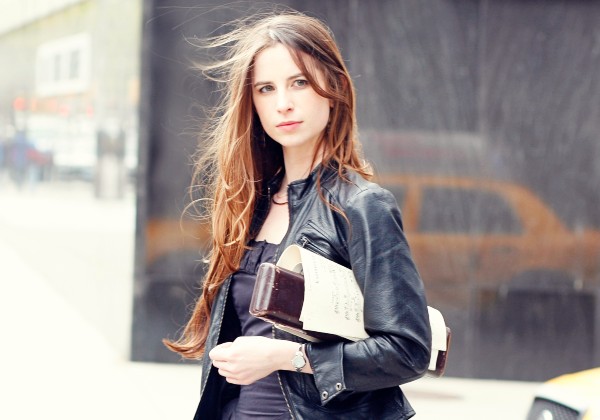 GEMS congratulates Emi Ferguson on receiving a prestigious Avery Fisher Career Grant. She was featured in the award ceremony on March 28, 2023 (watch it here) performing music by the 17th century Italian composer Isabella Leonarda (1620–1704).
GEMS congratulates Emi Ferguson on receiving a prestigious Avery Fisher Career Grant. She was featured in the award ceremony on March 28, 2023 (watch it here) performing music by the 17th century Italian composer Isabella Leonarda (1620–1704).
Emi performs regularly with early music ensembles in New York and recently toured with Ruckus throughout the United States. She is Principal Flute of Boston's Handel & Haydn Society.
Congratulations, Emi!
Remembering James Bowman
The great English countertenor James Bowman has died at the age of 81. Bowman was a pioneer in the field of Baroque music in England, singing with David Munrow’s Early Music Consort while at the same time thrilling audiences as Oberon in Britten’s A Midsummer Night’s Dream. Highlights of his extensive discography include recordings of Handel with Christopher Hogwood and Purcell with Sir David Willcocks. James Bowman imbued his performances with an energy and forthrightness which departed from the style of Alfred Deller and set the stage for a new generation of virtuoso countertenors including Michael Chance, David Daniels, Andreas Scholl, and Iestyn Davies.
When living in London in the 1980’s, I was stopped in my tracks one afternoon as Bowman’s recording of Handel’s Eternal source of light divine came over the BBC airwaves. The perfection, beauty, and simplicity of the performance left me absolutely speechless. That the accompanying trumpeter was Crispian Steele-Perkins, with whom I was then studying, gave validation and inspiration to my own calling as an early music performer. James Bowman’s Eternal source was a model of excellence then and will remain so forever. Listen here
—John Thiessen
Remembering Fred Hammond
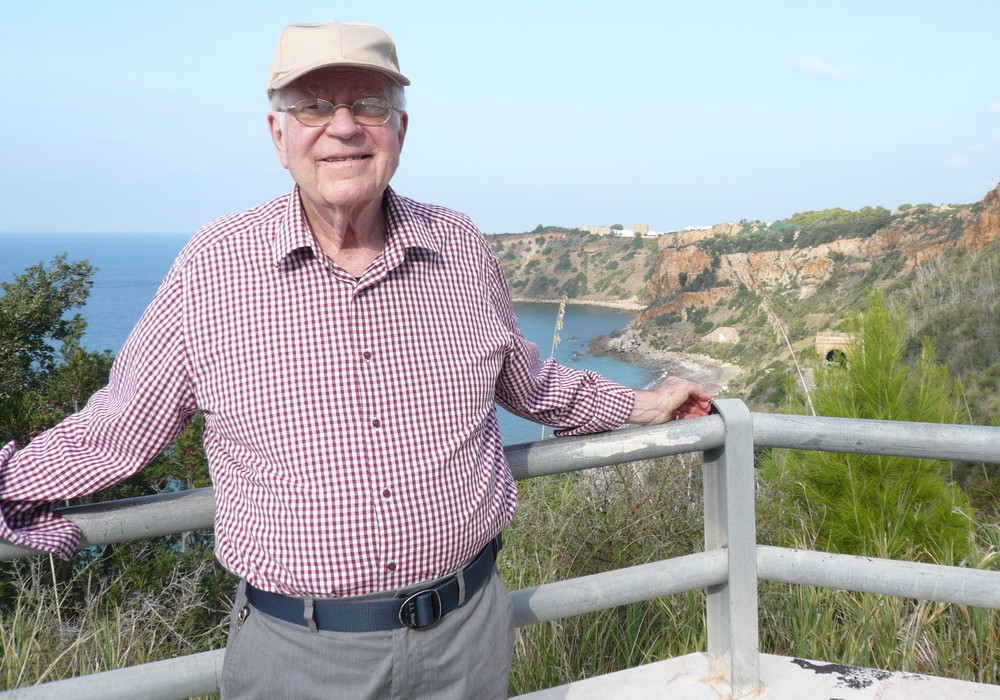 From Bard College President Leon Botstein:
From Bard College President Leon Botstein:
It is with sadness that I inform the Bard community of the death of our colleague, Frederick Hammond, just a few days ago. He served as Irma Brandeis Professor of Romance Culture and Music History at Bard between 1989 and 2013, when he retired. Fred suffered from progressive heart disease; he was quite ill during these past months. But his mind and spirit did not weaken. Last August he celebrated his 85th birthday. A memorial service is being planned according to his wishes, and he will be interred in the Bard College cemetery.
Fred was an exceptional scholar and performer. He was a member of a pioneering post World War II generation of American music historians, many of whom, like Fred, were not only scholars, but performers. He was an undergraduate at Yale University where he also completed his Ph.D. He taught first at the University of Chicago, then at Queens College of the City University of New York, and subsequently, for almost a quarter century, at the University of California, Los Angeles, before coming to Bard. He was the first full-time music historian in Bard’s history.
Fred was a distinguished scholar of Medieval, Renaissance, and Baroque music. He is best known for his definitive biography and study of the works of Girolamo Frescobaldi. His other major contributions to scholarship concern patronage and culture during the Baroque era in Rome, primarily the contributions of the Barberini family. His scholarly interests made Fred Hammond an expert and connoisseur of all things Italian, including its ancient and modern history, its literature, and above all, its language.
This summary does not do justice to the exceptional depth, mastery of detail, and subtlety of Fred Hammond’s learning. He was a true scholar who loved archives, manuscripts, and the joy of searching for clues and evidence to solve historical riddles and paradoxes, small and large. He inspired and trained many younger scholars, including the late James Harold Moore, a protégé from Fred’s years at UCLA who discovered major works of the Baroque long thought forgotten and who solved the mystery of performance practices inside the church of San Marco in Venice, the subject of one of Fred’s last publications.
Fred Hammond was a distinguished keyboard player. He was a student and protégé of Ralph Kirkpatrick, the eminent harpsichordist and expert on Scarlatti. Fred studied with Kirkpatrick at Yale. Fred’s primary instruments were the harpsichord, clavichord, and the organ; his knowledge of the history of these instruments was astonishing. He played continuo in professional performances for most of his life. In the 1980’s he was the continuo player for the Los Angeles Philharmonic. Fred directed the E. Nakamichi Festival of Baroque Music in Los Angeles, and the Clarion Music Society in New York. At Bard, he played in many a Bard Music Festival, including a delightful performance of an opera by Franz Joseph Haydn.
Fred was charming, wonderfully articulate, and generous to others. His command of English, in writing and speech, was elegant and exemplary. His writings mirrored an ideal of clarity and refinement. His concern for the beauty of language betrayed a lifelong love, not only of the intersection of words and music found in sacred music, opera and song, but also of poetry, particularly the work of W.H Auden.
As a performer and scholar, Fred’s range was astonishing. He was as well versed in the music of the 19th and 20th century as he was in the music of the 18th, 17th and 16th centuries. The exceptional range of his expertise was available to Bard undergraduates, not only in Annandale but in the Bard Prison Initiative. Fred was the first to teach music history in BPI. He did so with great imagination and style; he considered teaching in BPI a high point in his career as a teacher.
Bard will miss Fred, as will musicians, scholars, and friends, in New York, on the east coast, and others in Europe. His life and work will be remembered, as will his devotion to the towering achievements of the human imagination.
Founder Gene Murrow Retires as Executive Director
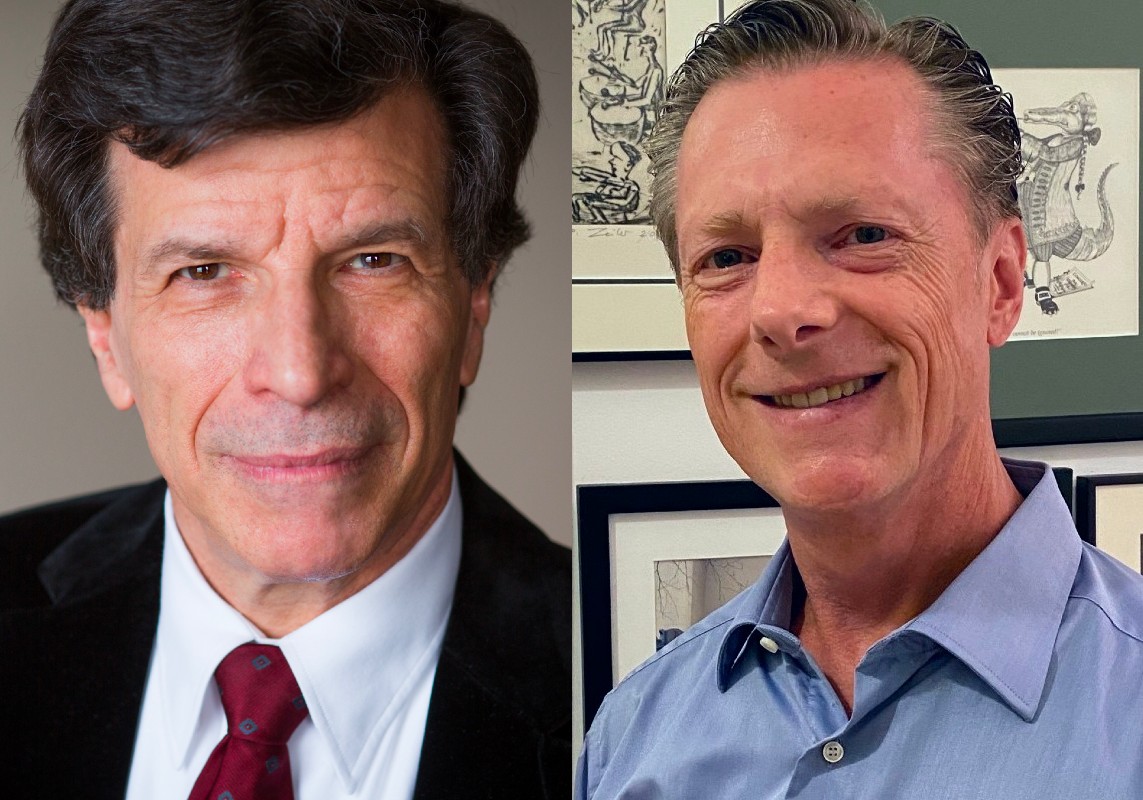
It is with great pride and a touch of wistfulness that I announce my retirement as Executive Director of Gotham Early Music Scene (GEMS). I write to thank you for your loyal support over these 15 years since our founding. Together, we built an organization that changed the dimensions of the early music scene in New York; more music, more work for artists, and a near-limitless journey into global musical history.
In a testament to the dedication and quality of the GEMS staff, volunteers, individual contributors, grant-makers, and visionary organizational governance, the GEMS Board of Directors has selected John Thiessen, our previous Director of Education and Concert Production, to be GEMS' next Executive Director—only the second person to hold this post since our founding. John is a highly respected musician (natural trumpet), contractor, and administrator, and is enthusiastic about making this major transition in his own career by taking on this new role.
I will continue my association with GEMS as President of the Board as of September 1, and lend a hand wherever the organization I so love deems useful as we move into a new phase.
GEMS is grateful for the passion, dedication, and encouragement of the artists and patrons in our early music community who have contributed so much to our success and that of our genre, and we look forward to continuing to serve them.
And now, for the last time as Executive Director, I ask that you consider making a special gift to GEMS in support of this exciting transition. For it is you, in unison with a devoted community of early music artists, benefactors, advocates, and educators, that truly keep New York on the map as a thriving nexus for the early music scene.
Wishing you strength, safety, endurance and, of course, the joy of music.
Gratefully yours,
Gene
Artist Spotlight ~ Arrow Quartet
March 2023
We recently sat down with violinist Amelia Sie to talk about the Arrow Quartet, GEMS’ newest fiscally sponsored group…
 Amelia, could you tell us about your quartet members, how you met, why you chose to form an ensemble, and how you arrived at the name “Arrow Quartet”?
Amelia, could you tell us about your quartet members, how you met, why you chose to form an ensemble, and how you arrived at the name “Arrow Quartet”?
The four of us met as students in the Historical Performance program at The Juilliard School. I was personally drawn to Vivian, Jimmy, and Chelsea, because of their honesty, thoughtfulness, and conversational style of playing! I would like to think that they feel the same about me, too.
The idea to create the Arrow Quartet was born in Chelsea’s car. I had asked her for a ride to Boston over winter break of 2021, and as she was driving us, we got talking about how much we wanted to create a quartet. Chelsea asked me what we should name the quartet. Her dog, Arrow, was sitting next to me, so I said “the Arrow Quartet!” and the name stuck. I think it’s particularly fitting because it also implies direction, which as historical performers living in the 21st century is something that we think about on multiple levels—historically, professionally, and musically, to name a few. And Arrow is hands down the perfect dog, so naming the quartet after her is the least we can do to honor her.
There are so many string quartets playing on modern and period instruments. What does the Arrow Quartet bring to the genre?
The Arrow Quartet brings two things to the genre: A fresh take on making a more accessible and inclusive concert experience, and a desire to expand the historical performance canon past the standard classical music repertoire. The quartet is so lucky to have musicians who specialize in genres outside HP and modern classical performance. Jimmy is an incredible fiddler; Vivian has extensively studied the music of the Americas; and Chelsea was in a rock band before college! Their interests outside of classical performance are such a gift for the quartet, because it expands the possibilities of pieces we feel comfortable and are excited to perform.
For me, as an Asian-American person, I know too well the feeling of out-of-placeness and how it has prevented me from trying new things. I think that the classical music concert experience can give people that feeling sometimes. Therefore, it’s really important to me that, no matter what music we play or what venue we play in, we’re creating a welcoming environment for all listeners to come and take in the experience in a way they feel is most truthful for them. This can happen in multiple ways, like having a sliding scale ticketing system, speaking to the audience, or performing in a way that inspires the audience to listen with honesty. I’m incredibly grateful that Vivian, Jimmy, and Chelsea so ardently feel the same. Their willingness to give each other and the audience their full selves makes every performance meaningful!
If you were to look out five years, what are your hopes and dreams for the Arrow Quartet?
We would love to make an album! We’re constantly sharing music and possible program themes with each other, and have a Google Doc overflowing with album ideas. Currently, we’re thinking about creating an album on either the music of the Americas or Minuets across time and genres. It would be so special to have either (or both!) of these out in the world to share with people.
Why did the Arrow Quartet choose to become a GEMS fiscal sponsored ensemble?
We chose GEMS because we strongly connected with their mission. GEMS is one of the few early music corporations that clearly states a goal to expand and diversify the early music audience, and it has the evidence to back it up through the Open Gates Project. This is something that is very important to us, because we truly believe that music is for all people to experience and enjoy.
When and where can we hear the Arrow Quartet perform?
We have a few performances coming up, in New York City and beyond!
On 3/24, we’ll be performing Mozart’s Quartet in F Major, K 590 on our violist Jimmy Drancsak’s recital. It’s at 5:30 pm in Morse Hall at The Juilliard School.
On 3/25 and 3/26, we’ll be taking our program “It Takes A Village” on the road. This program explores patron-composer relationships from the 1600–1800s, and features music by Sor Juana Inés de la Cruz, Wolfgang Amadeus Mozart, and Ludwig van Beethoven. Our two performances are:
3/25 at 4:00pm at the Dedham Museum & Archive in Dedham, MA
3/26 at 2:00pm at the Roger Williams University Performing Arts Center in Bristol, RI.
We have a few more concerts slated in the Spring and are just now finalizing the dates for those…we’ll make sure to update everyone! We’d love to see you there!
Visit the Arrow Quartet website for more info




